In planetary classification, a class A geothermal planet is a type of planet. As the name describes, the planet is generally geothermally active, generating heat. This type of planet is usually in the very early stages of development and are likely to evolve into other classes. No lifeforms have ever been discovered on these planets.
In planetary classification, a class B geomorteus planet is a type of planet. This type of planet is usually very close to, and heated by, a parent star, featuring very little native geothermal energy. The atmosphere of these worlds is usually tenuous, and features little or no chemically active particles. No lifeforms have ever been discovered on these planets. Mercury is an example of a class B geomorteus planet.
In planetary classification, a class C geoinactive planet is a type of planet. As the name describes, the planet is generally geothermally inactive, generating no heat energy. This type of planet is usually in the very late stages of development and has likely evolved from other classes. No lifeforms have ever been discovered on these planets.
In planetary classification, a class D planetoid is a type of planet. Planets of this type are generally smaller asteroids or moons that are locked into the gravitational pull of a larger planetary body. Class D worlds are usually composed of metals, predominantly nickel, iron and silicate. Bodies of this type generally do not support lifeforms.
A Class E planet is one that has a high temperature and a molten surface.
A Class F planet is a planet that has volcanic eruptions due to a molten core.
Class G geocrystalline, in planetary classification, is a type of planet. The relatively young geocrystalline worlds have also been classified as class F planets on other scales, and are possessed of a mostly carbon dioxide atmosphere with some toxic gases, released as the planet cools and crystallizes. Lifeforms usually only exists as single-celled organisms due to the absence of free water on the young world. These planets are generally between three to four billion years old and measure 10,000 to 15,000 kilometers in diameter.
A Class H planet is a planet that is hot and arid with little or no water.
A Class I planet is a planet that has a very tenuous surface made up of gasseous hydrogen and hydrogen compounds.
A Class J planet is a planet that has a surface composed of gasseous hydrogen and hydrogen compounds.
A Class K planet is a planet that can be adapted for humanoid habitation.
In planetary classification Class L is a category of planet, only marginally habitable by humanoid life. Such planets are though capable of supporting humanoid colonization.
The Class M (or Minshara-class) planet is the most stable type for humanoid habitation. Class M planets may feature large areas of water, if water or ice covers more than 80% of surface then the planet is considered Class O or Class P.
A Class N planet is a planet that has a high surface temperature due to a greenhouse effect and water exists only as vapor.
In planetary classification Class O or Pelagic planets are those who's surfaces are comprised of 80% or more water. These planets may have some land, but it is not a majority feature. An example of a class O planet is Argo, the planet Earth is very close to Class O.
A Class P planet is a planet that is covered by water ice and is capable of supporting life.
The Class Q, from the old Vulcan Quaris class, is a type of planet that has rarely been encountered by the Federation. Conditions vary widely on class Q worlds, with very hot and cold regions and great variety in surface conditions.
A Class R planet is a planet that drifts through interstellar space or in cometary halos.
Classes S and T planets are planets of enormous size that have very tenuous surfaces made up of gasseous hydrogen and hydrogen compounds.
A Class Y planet is a planet that has a turbulent atmosphere, saturated with toxic chemicals and thermionic radiation.
- Cast & crew
- User reviews

Assignment: Earth
- Episode aired Mar 29, 1968

While back in time observing Earth in 1968, the Enterprise crew encounters the mysterious Gary Seven who has his own agenda on the planet. While back in time observing Earth in 1968, the Enterprise crew encounters the mysterious Gary Seven who has his own agenda on the planet. While back in time observing Earth in 1968, the Enterprise crew encounters the mysterious Gary Seven who has his own agenda on the planet.
- Marc Daniels
- Gene Roddenberry
- Art Wallace
- William Shatner
- Leonard Nimoy
- DeForest Kelley
- 39 User reviews
- 14 Critic reviews

- Captain James Tiberius 'Jim' Kirk

- Mister Spock

- Mister Seven

- Roberta Lincoln
- (as Terri Garr)

- Col. Nesvig
- First Policeman

- Second Policeman
- Security Chief

- Beta 5 Computer
- (uncredited)
- Lieutenant Hadley
- Lt. Clifford Brent
- All cast & crew
- Production, box office & more at IMDbPro
Did you know
- Trivia While at the launch base and showing his ID to the security person, Mr. Seven shows a National Security Agency credential card. The NSA was one of the worst kept government secrets, but was not publicly acknowledged until nearly 25 years after this episode originally aired.
- Goofs When Spock is trying to subdue Roberta, he apparently forgets the Vulcan neck pinch.
Roberta Lincoln : [indicating Isis] Would you mind telling me who that is?
Mister Seven : That, Miss Lincoln, is simply my cat.
- Alternate versions Special Enhanced version Digitally Remastered with new exterior shots and remade opening theme song
- Connections Featured in The Best TV Shows That Never Were (2004)
- Soundtracks Theme Music credited to Alexander Courage Sung by Loulie Jean Norman
User reviews 39
- May 9, 2006
- March 29, 1968 (United States)
- United States
- Official Facebook
- Manhattan, New York City, New York, USA (Stock Footage)
- Paramount Television
- Norway Corporation
- See more company credits at IMDbPro
Technical specs
- Runtime 50 minutes
Related news
Contribute to this page.
- IMDb Answers: Help fill gaps in our data
- Learn more about contributing
More to explore

Recently viewed
M Marks the Spot: Star Trek's Planet Classifications, Explained
Star Trek's characters use a very specific system to classify the planets they encounter. Each letter and category has its own specific meaning.
The bright, optimistic future of Star Trek entailed regular scientific exploration, which was part of Starfleet’s mantra. That included an entire lexicon of terms, to better sell the show’s setting and to provide the sheen of rigor to its various dramatic plots. Planets were grouped according to class – each one with different features and details – which became a part of the world-building and continued to be used in subsequent Star Trek series. The most enticing was Class M , which was a planet capable of sustaining humanoid life. That meant new alien beings, new cultures and civilizations, or even just a suitable spot to set up a colony.
But class M wasn’t the only type of planet in the Star Trek lexicon. Nine others were mentioned at one point or another during the series, each with a letter demarking their status. A list of all classifications follows, along with a brief description of their conditions.
RELATED: Star Trek: Lower Decks Reveals What Kind of Captain Riker Really Is
Class D: Barren Rock
Class D referred to a planet or planetoid completely devoid of atmosphere. The most prominent example in canon was Regula, the planetoid from Star Trek II: The Wrath of Khan . Spock described it as “a great rock in space,” composed of unremarkable elements and of little note beyond that.
Class H: Uninhabitable
The class H designation in Star Trek canon was vague, though largely uninhabitable by most humanoid species. One exception was the Sheliak, an “R-3” lifeform consisting of what appeared to be sentient blobs. They laid claim over several Class H worlds, which the Federation ceded to them as part of a treaty. However, a class H planet named Tau Cygna V was inhabited by human colonists, provoking a diplomatic incident with the Sheliak that the Enterprise-D resolved in Star Trek: the Next Generation Season 3, Episode 2, “The Ensigns of Command.”
RELATED: Star Trek: Lower Decks Confidently Beams Back for a Charming & Silly Season 2
Class J: Gas Giant
Class J was designated a manner of gas giant, akin to Jupiter. They are uninhabitable by humanoid life forms though their varying layers of atmosphere could conceivably carry life of a non-humanoid sort. The most prominent onscreen appearance came in Star Trek: Deep Space Nine Season 4, Episode 7, “Starship Down.” The Defiant engaged in a game of cat-and-mouse with the Jem’hadar in the atmosphere of a remote planet fitting the classification.
Class K: Habitable with Modifications
A class K planet was deemed habitable in many ways, but with surface conditions too harsh to support humanoid life. That could include anything from extreme temperatures to lack of a breathable atmosphere. People could live on such worlds with help from technological devices such as pressurized air domes or underground structures, but exposure to the surface without protective gear would be lethal. The Original Series Season 2, Episode 12, “I, Mudd” was set on a class K planet, beneath a dome controlled by androids where Harry Mudd set himself up as king.
RELATED: Star Trek: Lower Decks' Noël Wells & Eugene Cordero Discuss Starfleet's Joy
Class L: Marginally Habitable
Class L planets held all of the components suitable for human life, and could often support such life for extended periods of time. They are usually quite barren, though some contain arable land and others are able to support colonies of hundreds of thousands of people. Class L planets are mentioned regularly throughout the franchise, notably in multiple episodes of Star Trek: Voyager .
Class M: Habitable
The vast majority of Star Trek’s alien worlds are class M, featuring a sustainable oxygen atmosphere, viable ecology and other Earth-like qualities. That allows all manner of life to develop on them and provides a convenient location for franchise's stories. Most civilized worlds in the Star Trek universe are class M, including Earth, Vulcan, Qo’noS and Andoria -- though Andoria is technically a moon. The “M” stands for “Minshara,” a Vulcan term used in Star Trek: Enterprise , though none of the other planetary classes had in-canon designations beyond the letters.
RELATED: Star Trek: Lower Decks' Tawny Newsome & Jack Quaid Tackle Starfleet's Besties
Classes N and R: Habitable With Unknown Modifiers
Both class N and class R planets are deemed habitable, though they differ from Class M planets in a manner that the Star Trek canon has yet to lay out. In both cases, their respective atmospheres are sensitive to specific types of explosives. Beyond that, their properties are unknown. Both were mentioned for the first time in The Next Generation Season 4, Episode 17, “Night Terrors.”
Class T: Gas Giant
A class T is a gas giant, similar to a class J. As with classes N and R, there is no current in-canon explanation for the differences between the two. Class T planets have thus far only been mentioned once in the franchise: Voyager Season 6, Episode 20, “Good Shepherd.” The Delta flyer encounters one bearing rings, though it’s unknown if those are the distinguishing factor for the class or not.
RELATED: Star Trek: Discovery Season 4 Release Date, Trailer, Plot & News to Know
Class Y: Demon Planet
Class Y planets were designated “demon planets” due to their overtly toxic and dangerous atmospheres, and for their often hellish surface appearance. That could include surface temperatures higher than 500 degrees Kelvin and radiation discharges that were actively harmful to humanoid life. Its most notable appearance came in Voyager Season 4, Episode 24, “Demon,” which used a class Y planet as its primary focus.
KEEP READING: Star Trek: One of the Series' Most Quoted Phrases Was Never Actually Said

- May 6, 2024 | William Shatner Calls Return To Star Trek “Intriguing Idea,” Suggests Digital De-Aging To Play Kirk Again
- May 6, 2024 | Preview ‘Star Trek: Discovery’ Episode 507 With New Images And Clip From “Erigah”
- May 5, 2024 | Alex Kurtzman Says There’s An Infinite Number Of Star Trek Stories To Tell, But New Shows Must Be “Authentic”
- May 5, 2024 | Interview: Mary Wiseman On Doing Some “Classic Star Trek” In ‘Discovery,’ And Tilly’s Future
- May 5, 2024 | Doug Jones Explains His Recent Absence From ‘Star Trek: Discovery’… And Confirms Saru’s Return
Forgotten Roddenberry: Planet Earth
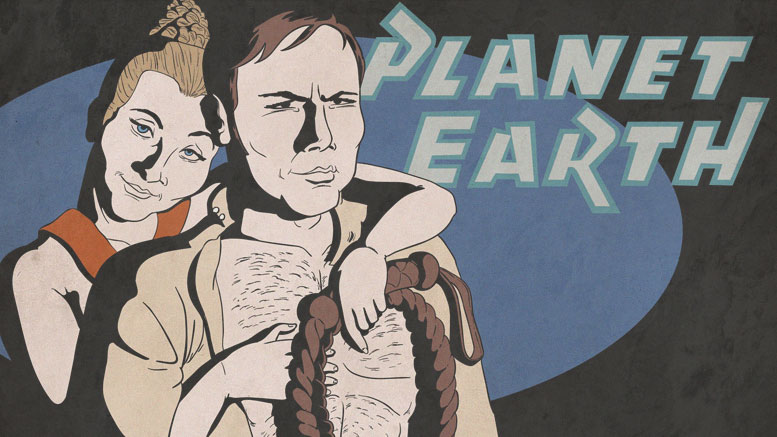
| February 9, 2017 | By: Mark Farinas 27 comments so far
Welcome back to our bi-weekly series on Gene Roddenberry’s work between Star Trek incarnations. Last time we looked at a boy and his robot in The Questor Tapes . This time we return to the land of the PAX in Planet Earth .
A large chunk of Star Trek’s mythology revolves around NBC’s “unprecedented” willingness to order a second pilot after Gene Roddenberry’s first attempt didn’t quite work for them. In reality, it was pretty common at the time for networks to order a reworked second pilot, usually because they liked the concept but not the casting. The Dick Van Dyke Show , Gilligan’s Island and The Munsters (which was originally in color) are just a few examples. But no one can doubt that Roddenberry was the king of second (and third , and forth , and fifth ) chances. After Genesis II was passed on by CBS, ABC was willing to give the idea another shot on their dime. The outcome was Planet Earth (not to be confused with the BBC documentary series), a completely retooled and recast version of the adventures of 20th Century scientist, Dylan Hunt, in a post-apocalyptic future.

- Majel Barrett gets her smallest cameo yet as a dispatcher on a tiny view screen. It’s quite a demotion from member of the PAX leadership council. Another reason Genesis II is superior.
- When Hunt asks Marg if she believes in “people’s lib” she drunkenly raises her glass and proclaims “I believe in balance!”, referring the the amount of alcohol each of them needs before they can bone. Even smashed out of her mind she isn’t buying this crap.
- Villar, the slave auctioneer, wears the same hair buns as Princess Leia. I understand this is not a completely uncommon do, but it’s fun to know the two biggest sci-fi franchise creators used the same hairstyle three years apart from each other.
- At one point Isiah considers using one of the Kreeg’s rifles against them, but instead smashes it to remove the temptation. It’s a nice touch.
- “Of course you can touch me! Just why do you think you’re here?!” is the best line in the whole movie.
- Harry Sukman, who created Planet Earth’s jazzy, Jonny Quest style theme music also scored an episode of The Lieutenant , the show Roddenberry created before Star Trek that starred Gary Lockwood.
- Robert Justman produced Planet Earth . This would be the only time between the two Star Trek incarnations that he would work with Roddenberry.
- Saxon starred in a third attempt to bring the PAXverse to the small screen, this time as astronaut Anthony Vico. ABC aired the aptly named Strange New World in 1975. Because Roddenberry absolved himself of the project early on I won’t be reviewing it.
- I could be wrong, but Planet Earth’s title font seems to be a custom job done up in a bevel that would make a Sega Master System box artist proud. The credits font, however, is identifiable as Lydian Bold.
Related Articles

All Access Star Trek Podcast , Celebrity , Discovery , DS9 , ENT , Lower Decks , Star Trek: Legacy , Star Trek: Picard , Strange New Worlds , TNG
Podcast: Armin Shimerman, Kitty Swink, Jonathan Frakes & Juan Carlos Coto—Trek Against Pancreatic Cancer
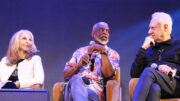
Conventions/Events/Attractions , Star Trek Universe TV , Star Trek: Legacy , Star Trek: Picard , TNG , Trek on TV , Upcoming TV projects
‘Picard’ Cast Talks “Cozy” Enterprise-D, Gates Hosts “Genesis” Watch Party, And More Star Trek Cruise Day 6
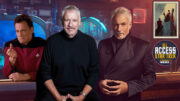
All Access Star Trek Podcast , Section 31 , Star Trek: Picard , TNG
Podcast: All Access Star Trek Has A Q&A With John de Lancie
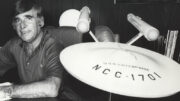
History , Memorabilia , TOS
Rod Roddenberry In Talks To Recover What May Be The Lost Original Enterprise Model From ‘Star Trek’ [UPDATED]
I don’t even need to read this piece to know that paying proper critical attention to “Planet Earth” is like shooting fish in a barrel. But I am looking forward to reading it, because this series of reviews is terrific.
I’ve enjoyed this series. Is this the last of the non-Trek Roddenberry projects there is to review?
Wasn’t “Planet Earth” a proposed script for the Genesis 2 series? History shows that the death of this project beyond the two pilots was probably a good thing. I do wonder though if someone like Ron Moore could do something cool with the premise the way that he turned the new Galactica into a work of art from its cheesy roots. Perhaps a reimagined Questor might work too, especially as the reality of AI and its effects on society are rapidly expanding.
2 weeks till “Pretty Maids all in a Row” recap !!!!!
I’m still waiting for that one. The flick turned up on TCM in the late summer of 2016; I don’t think it’s been run since. My take – “Summer of ’42”, which came out the same year as “Pretty Maids All In A Row” (1971), has a more mature attitude about sex than Roddenberry’s frequently juvenile romp. Look for some “Trek” actors in “Pretty Maids…” – James Doohan, William Campbell, Bart LaRue.
Very complete review with some good info on production. But I think the political/social analysis – some very good — needs context regarding the time. 70’s shows like “Charlie’s Angels” and “Three’s Company” hadn’t even aired yet — that’s the direction TV was going. Compare Roddenberry’s female roles to stuff like that — good and bad. I enjoyed PE when it aired, but was just getting into TOS reruns at the time.
MARK FARINAS,
Come on Mark, apples and oranges. There’s quite a big bit of difference between ordering another 30 minute fx free comedy pilot and an expense hour long fx SF pilot
I only mentioned recognizable shows to make my point quickly; That being ordering a second pilot was not a rare occurrence in and of itself in 1965. It’s another strike against the myth of Star Trek exceptionalism. This list is more extensive and includes genre shows and dramas: http://startrekfactcheck.blogspot.com/2016/04/second-pilot-episodes-before-star-trek.html
Plus, the Munsters, with its extensive makeup, costumes, and sets, hardly qualifies as an “fx free comedy”.
Except Star Trek is exceptional and there’s nothing wrong with that.
Star Trek is a snowflake.
I’ve found more second pilots since writing that, in fact. And while there’s certainly a difference between a half hour sitcom and an hour drama (the effects and sf genre are really irrelevant here; Mannix and Mission: Impossible were both more expensive than Star Trek, for example), none of the literature that I’ve read (a number of sources are cited in that piece) seemed interested in the distinction. In most cases, the mere existence of a second pilot episode for Star Trek was called “unprecedented.” This is simply untrue.
Re: I’ve found more second pilots since writing that…
I assume this means you are the author, Kmet, which means I should say , “Hi”, since its been awhile since we’ve engaged in such discussions.
Thanks for chiming in. But I am curious, does Poe’s “fair” point still hold?
That’s me.
I assume you are referring to Poe’s claim that a network had never ordered a second pilot after rejecting an initial pilot before Star Trek (if my understanding is incorrect, please let me know). Although this is more subdued than later claims about the seond pilot being “unprecedented,” it still doesn’t hold water — in the article I wrote on this subject, several of the second pilots listed were cases in which a network had rejected a pilot, but asked for a second try.
Re: That being ordering a second pilot was not a rare occurrence in and of itself in 1965.
Well, if that’s your sole point, i.e. that it’s been blown out of proportion over the decades, then I can nod to that. However, please note that your own cited source says, “To be fair to Whitfield (the nom de plume of Stephen Edward Poe, who shared credit with Gene Roddenberry, but wrote most of the book himself), he wasn’t claiming that a second television pilot had never been produced for the same property before — only that, prior to Star Trek, no television network had ever asked for a second pilot episode after rejecting the first one.”
And the use of common stage FX in THE MUNSTERS pilot hardly compares to the extensive for more expensive optical FX which traditionally comes to mind when one thinks of the STAR TREK pilots. For one thing, in THE MUNSTERS you could see “strings” being used all over the place even on 60s’ vintage sets.
And the far less expense of such comedies, were what NBC was angling to scoot Trek off the air in the first place when they first considered cancelling it.
What ever logical twists and turns you need to make to have Star Trek be the first/only/most impressive second pilot ever ordered, buddy.
Re: …have Star Trek be the first/only/most impressive second pilot ever ordered…
You mean something like, for example, saying that it was the first “rejected” pilot that went on, with some minor tinkering, to actually get aired despite that flat rejection and win a Hugo Award for “Best Dramatic Presentation” to boot?
Which Michael K’s research states “doesn’t hold water”. Reread his comment above. You’re wrong and you keep trying to move the bar in order to be right. Sorry to break it to you, pal.
My phrasing could have been quite a bit sharper in the beginning of that piece. Poe’s first sentence in the disputed passage is “NBC shattered all television precedent and asked for a second pilot.” To be straightforward, that’s bunk, and it’s not hard to see how subsequent sources exaggerated Poe’s claim even further.
Re: …keep trying to move the bar in order to be right.
I’m doing nothing of the kind. I know people on this side of the millennium aren’t much for checking footnotes, etc. but I was citing Poe’s claim in the sentence prior to the one where he made the claim that riles you so in THE MAKING OF STAR TREK on page 126:
“They had simply chosen the wrong story among the three that Gene had submitted prior to developing the script.* Thus NBC shattered…”
The asterisk was a footnote which read; “Gene’s personal feelings about THE MENAGERIE were vindicated when, about a year later, this rejected first pilot film was expanded into a two-parter, it won science fiction’s coveted Hugo Award.” — THE MAKING OF STAR TREK by Stephen E. Whitfield, Ballatine Books, Copyright 1968, 6TH printing October 1970
Thanks again for the sharp, articulate, and clever review of another lost 70s confection. I just started watching it based on the review and being able to notice the 3rd season Trek uniform fabric was super neat. This review was especially effective with the smart selection of visuals that give the historical context. So much expertise and brain power went into this review. A wondrously delicious geek banquet of ideas, retrospections, and nostalgia. (I remember seeing this on television in the mid 70s and not being interested enough to attend to it. Played in the background while I did homework …).
What planet was this set in?
Or on, I should say. But on a more serious note, it’s interesting to observe that this production occurred well before the Mad Max films popularized post-apocalyptic settings. It was thus in that way a bit prescient.
Further, the tenor of the times — post-Nixonian? — and the history of America (the Vietnam War in particular) make this an interesting look into the intellectual views of that era.
Didn’t they pick up SIX MILLION DOLLAR MAN over this?
I don’t think so. Six Million Dollar Man came out on ABC in 1973, a year before Planet Earth was aired. Unlike Genesis II, I don’t think Planet Earth was passed over for anything. ABC did a second pilot treatment of the concept without Roddenberry the very next year called “Strange New World”.
If I recall correctly, THE SIX MILLION DOLLAR MAN, started out as a series of TV movies before ABC committed to a regular TV series so it’s possible.
https://archive.org/stream/starlog_magazine-051#page/n39/mode/2up
“When we did Planet Earth, ABC insisted on doing a story I thought was wrong. It was kind of a women’s lib story set in the future and wasn’t very interesting. I think what they had in mind when they pushed us in that direction was that they would be ‘science fiction women’ with long legs, silver costumes, and well-endowed. And after we shot it, they came in very upset and disappointed. They didn’t realize that’s not my kind of science fiction and I was surprised they thought I might do that kind. I was trying to design a believable society that might exist under those circumstances — nothing like they had in mind. It was a break down in communications that contributed to the outcome of Planet Earth.” — Gene Roddenberry, October 1981
LOL. Gene could certainly spin a yarn, couldn’t he.
Memory Beta, non-canon Star Trek Wiki
A friendly reminder regarding spoilers ! At present the expanded Trek universe is in a period of major upheaval with the continuations of Discovery and Prodigy , the advent of new eras in gaming with the Star Trek Adventures RPG , Star Trek: Infinite and Star Trek Online , as well as other post-57th Anniversary publications such as the ongoing IDW Star Trek comic and spin-off Star Trek: Defiant . Therefore, please be courteous to other users who may not be aware of current developments by using the {{ spoiler }}, {{ spoilers }} OR {{ majorspoiler }} tags when adding new information from sources less than six months old (even if it is minor info). Also, please do not include details in the summary bar when editing pages and do not anticipate making additions relating to sources not yet in release. THANK YOU
- Memory Beta articles sourced from games
- Memory Beta articles sourced from websites
- Memory Beta articles sourced from novels
- Memory Beta articles sourced from novellas
- Memory Beta articles sourced from episodes and movies
- Memory Beta articles sourced from novelizations
- Memory Beta articles sourced from comics
- Memory Beta articles sourced from comic adaptations
- Memory Beta articles sourced from video games
- Federation worlds
- Alpha Quadrant planets
- Third planets
- Sector 001 planets
- Quadrant 0 planets
- View history
Earth (also known as Tellus , Terra or Sol III ) is a class M planet , the third planet in the Sol star system in the space of the galaxy 's Alpha Quadrant , at coordinates 1.23N 2.79W. It is the Federation capital, and the primary political subdivision of United Earth , one of five founding members of the Federation. Its sentient species include Humans and cetaceans .
Earth served as the model for the class M classification. ( ST website : StarTrek.com )
It has one moon , Luna . ( FASA RPG module : The Federation )
It is often called Terra , its Latin name, by many non-Humans throughout the Federation. ( DS9 novella : Andor: Paradigm ) The term Terran can refer to Humanity in general, to things related to Earth, or specifically to its citizens. See also: Terran Empire .
- 1.1 Early history
- 1.2 Humanity
- 2 Alternate timelines
- 3.1 Bodies of Water
- 3.2 Continents (and Provinces)
- 3.3 Geographic Features
- 3.4 Cities and Settlements
- 3.5 Points of Interest
- 3.6 Moons and Satellites
- 4 Notable Locales
- 5.3 Species and cultures originating from Earth
- 6 Earth-related categories
- 7.1.1 Event connections
- 7.1.2 Political and geographical connections
- 7.2 Appearances
- 7.3 References
- 7.4 External links
History [ ]
See also Human and United Earth .
Early history [ ]
Earth was formed 4.6 billion years ago within a nascent Sol system. Its biosphere began forming 3.5 billion years back as amino acids appeared in the region known as France . ( TNG episode & novelization : All Good Things... ) Two billion years ago, single-celled life began evolving. ( Last Unicorn RPG module : All Our Yesterdays: The Time Travel Sourcebook )
Life on Earth evolved. For several million years dinosaurs were ascendant. Their era ended when a large asteroid , or comet , hit Earth during the galactic battle between the Q and the forces of the being 0 . ( TNG novel : Q-Strike , ENT episode : " Azati Prime ") One dinosaur species survived to become the Delta Quadrant species Voth . ( VOY episode : " Distant Origin ") The Preservers moved another promising reptilian species off Terra to ensure their development, and they became the Clan Ru . ( TOS novel : First Frontier )
Some four million years ago, the rogue planet of Cybertron drifted near Earth, the ships of both Optimus Prime and Megatron crash landing on Earth in their attempt to clear a path for their homeworld through the Sol asteroid belt . ( TAS - Star Trek vs. Transformers comic : " Issue 2 ")
As mammals reclaimed a mending planet, primates dominated the land while cetaceans ruled at sea. At one point, a probe from an alien cetacean race made contact with native humpback whales . ( TOS movie : Star Trek IV: The Voyage Home , TOS novel : Probe ) Several alien races contacted, and were worshiped by, early Terrans. ( TOS episode : " Who Mourns for Adonais? "; TAS episode : " How Sharper Than a Serpent's Tooth? ")
Q visited the planet in mankind's prehistory only to wind up trapped by Vandar who used Q's power to accelerate Earth's development and turn it into the capital of the Imperial Planets . Via manipulating time however, Q was able to undo these events before Vandar's conquest progressed further than a single tribe. ( TOS - Star Trek—Legion of Super-Heroes comics : " Star Trek—Legion of Super-Heroes, Issue 5 ", " Star Trek—Legion of Super-Heroes, Issue 6 ")
Humanity [ ]
In the last half of the 20th century , a subculture developed which believed that the planet had been visited by extraterrestrials. Between 1955 and 2018 , at least eighteen Vulcan probe ships were photographed by Humans, though this evidence was dismissed as being hoaxes by authorities and the public at large. ( TOS novel : Prime Directive ) Other races also visited Earth during this period, though most, like the Vulcans, were subject to a rule of non-interference. An exception to this was the Reticulans . ( TOS novel : Preserver )
In the 1980s, the Autobots and Decepticons on Earth awoke and began a secret war for the planet's energon supply, remaining until 2026 . ( TAS - Star Trek vs. Transformers comic : " Issue 2 ")
From 1992 to 1996 , Earth suffered during the Eugenics Wars , a series of conquest brought on by the Augments, genetically superior humans under the leadership of Khan Noonien Singh . ( TOS episode : " Space Seed ")
Various temporal incursions over time were undertaken to remove Khan from the timeline and prevent the Eugenics Wars. As described by the Romulan Sera , time was able to "heal" itself and keep reinserting Khan into the timeline, even if his rise to power was delayed by several decades. ( SNW episode : " Tomorrow and Tomorrow and Tomorrow ")
In the 23rd century / 17th century , James T. Kirk , possibly to avoid breaching the Prime Directive , stated to the Prosecutor he was from an "island" on Sarpeidon called Earth. ( TOS episode : " All Our Yesterdays ")
Earth in the 24th century was a successful world whose peace was won at great cost. Unlike other races, Humanity was split for much of its history into hundreds of religious, ethnic, cultural and national divisions. Early efforts to unite its peoples -- such as the League of Nations , the United Nations , and the New UN -- met with limited success. As an odd twist of fate, (328 years after its 2037 disappearance), Charybdis ' wreckage was discovered at Theta 116. Its American flag -a remnant from the period. When the front desk clerk was asked what he called planet Theta VIII, he replied "Earth." ( TNG episode : " The Royale ")
Earth was visited by the Reticulii in the 20th century to conduct genetic profiling of Humans, who were transported to orbiting medical ships. The Reticulii used Missing Time Syndrome to prevent the abducted Humans remembering their encounters. ( DS9 - Millennium novel : The Fall of Terok Nor )
The Bell Riots of 2024 were a turning point in Humanity's development. ( DS9 episodes : " Past Tense, Part I ", " Past Tense, Part II ")
In the early part of the 21st century , Humanity had developed a practical fusion-drive system which in turn allowed for the first manned vessel Icarus to be launched to the Alpha Centauri system. ( FASA RPG module : The Federation )
In the year 2026 , Earth began World War III , a catastrophic nuclear conflict that ended in 2053 and left the planet a burnt out husk. The slow recoveries were accelerated a decade later in 2063 when humanity made first contact with the Vulcans . A watershed in Terran history spurred by Cochrane 's first warp flight, the contact eradicated poverty, war and disease within fifty years. A final war concluded in 2079 and even more reform progressed. ( TNG movie : Star Trek: First Contact , TNG episode : " Encounter at Farpoint ")
By the early 22nd century , organizations moved toward a world government. The first serious attempt was made through the formation of the United Earth Republic in 2113 . Unfortunately the would be global state failed to obtain the admission of several major nationstates and within ten years most nations that had joined left. The UER was defunct by the year 2123 - a mere decade after it's founding. ( ST - Section 31 novel : Control ) The attempt that eventually succeeded was made by the European Hegemony and culminated in a United Earth that, by 2150 , had absorbed a final nation state and was fully unified. ( TNG episodes : " Up the Long Ladder ", " Attached ")
In 2151 , Starfleet launched its new warp-five NX -class starships , whose flagship , Enterprise , first made contact with many races including the Klingons , Andorians , and Tellarites . These established United Earth as an interstellar power, and paved the way for the founding of the Federation ( ENT episodes : " Broken Bow ", " The Andorian Incident ", " Shadows of P'Jem ", et al)
During the Federation-Klingon War of 2256-2257 , Earth was nearly invaded by the Klingon fleet before L'Rell became the leader of the Klingon High Council and called off the war. ( DSC episode : " Will You Take My Hand? ")
Following the end of James T. Kirk 's historic five-year mission in 2270 , Earth was conquered by the Tholian Assembly under the manipulations of Aegis only for the Tholian youngling Bright Eyes to speak to the Tholian Elders and call off the war. ( TOS comics : " Year Five, Issue 22 ", " Year Five, Issue 24 ")
In the years following the Tholian invasion, V'Ger returned to Earth, threatening to destroy the planet if its creator was not brought before it. Upon discovering that V'Ger was the NASA probe Voyager 6 , captain Willard Decker willingly merged with V'Ger to save Earth. ( TOS movie : Star Trek: The Motion Picture )
In 2286 , the Cetacean Probe arrived in Earth orbit, its transmission signals nearly destroying the planet, before a pair of humpback whales answered its call and it left the planet. ( TOS movie , novelization & comic adaptation : Star Trek IV: The Voyage Home )
Following the Battle of Wolf 359 , Earth was nearly assimilated by the Borg Collective in 2386 only to be saved by the USS Enterprise -D . ( TNG episode : " The Best of Both Worlds ") The Borg attempted another invasion in 2373 but the invading cube was destroyed. ( TNG movie : Star Trek: First Contact )
In the aftermath of The Burn in the 32nd century , United Earth withdrew from the Federation. ( DSC episode : " People of Earth ") In 3190 , Earth was at risk of being destroyed by debris from the Dark matter anomaly , the Federation aiding in the evacuation efforts before Unknown Species 10-C disabled their device. In gratitude, Earth rejoined the Federation. ( DSC episode : " Coming Home ")
Alternate timelines [ ]
In an alternate timeline created by the death of Gabriel Bell prior to the Bell Riots in 2024 , Earth remained a pre-warp civilization , which had never expanded beyond the Sol system by the 24th century . Consequently, neither the Federation nor Starfleet ever existed. The USS Defiant , having been protected from the changes in the timeline by a subspace bubble , detected Romulan transmissions emanating from Alpha Centauri . This would indicate that the Romulan Star Empire was able to expand considerably further in this timeline due to the lack of Federation interference. ( DS9 episode : " Past Tense, Part I ")
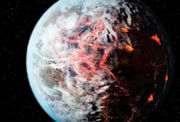
Earth is destroyed in an alternate timeline .
In another alternate timeline, the Xindi succeeded in destroying Earth in 2154 after Enterprise failed to stop the Xindi superweapon . ( ENT episode : " Twilight ")
In the alternate reality created by Nero 's temporal incursion, Nero attempted to use the red matter device to destroy Earth, but was prevented from doing so by James T. Kirk and Commander Spock . ( TOS movie : Star Trek ) In a splinter of this timeline, Nero destroyed Earth via red matter, crippling the Federation and causing it to rebase itself on Vulcan. What survived of humanity established New Earth . ( TOS - IDIC comic : " Part 3 ") In a possible future shown to Kirk by Q , Earth had been conquered by the Klingon Empire and became home of the Tera' Colony , with its capital in San Francisco . Worf was eventually slain by Changelings who immediately claimed Earth for the Dominion . ( TOS - The Q Gambit comic : " Part 3 ")
The homeworld of Miri and her friends, the Onlies , appeared at first to be a simple copy of Earth; however, it was later discovered that Miri's homeworld was actually Earth itself, of an alternate timeline. Miri's Earth had briefly drifted into the main universe due to instability in the local sector of space. It later returned to its original timeline. ( DTI novel : Forgotten History )
In another alternate timeline where Montgomery Scott rescued Kirk before he could be absorbed into the Nexus , Earth was assimilated due to the time-traveling Borg sphere , launched from the attacking Borg cube at the climax of the Battle of Sector 001 in 2373 . The USS Enterprise -E was not present to follow the Borg back in time, and thus they were free to complete their goal of taking over the seat of the Federation, preventing its initial warp flight and eventual founding of the interstellar confederation. The Borg Queen utilized the Sol system as a base of operations, mining all of the worlds for raw materials, and eventually erecting a sensor shield, building thousands of cubes behind the curtain of secrecy. ( ST novel : Engines of Destiny )
In one timeline, Earth never recovered from World War III and remained a burnt out husk. Rather than humanity rebuilding, the apes of Earth developed sentience and became the dominant races of the planet, organizing themselves into a strict and rigid caste system while humanity regressed into an animalistic state. This Earth would eventually be rendered lifeless following the detonation of a massive cobalt weapon. ( TOS - The Primate Directive comics : " Issue 1 ", " Issue 2 ", " Issue 5 ")
When showing off his powers, Gary Mitchell brought James Kirk to an Earth ruled by the Romulan Empire , noting it was a quite a common sight in the multiverse to find the planet either under Klingon or Romulan rule. ( TOS - IDIC comic : " Part 5 ")
In a timeline caused by Q 's interference, Renée Picard never undertook her mission to Europa . Without her discovery to both cure Earth's biosphere and bring out the best of humanity, Earth became the capital of the Confederation of Earth . ( PIC episode : " Penance ")
Geography [ ]
Bodies of water [ ].
- Pacific Ocean
- Atlantic Ocean
- Indian Ocean
- Arctic Ocean
- Southern Ocean
- Caribbean Sea
- Mediterranean Sea
- Sea of Japan
- Great Lakes
- Victoria Falls
- San Francisco Bay
Continents (and Provinces) [ ]
- North America
- Central America
- South America
- Pangaea (see TOS novel : First Frontier )
Geographic Features [ ]
- Rocky Mountains
- Death Valley
Cities and Settlements [ ]
- Palais de la Concorde
- Paris Spaceport
- Starfleet Academy
Points of Interest [ ]
- Yosemite National Park
- Golden Gate Park
- Golden Gate Bridge
- Eiffel Tower
- Starfleet Headquarters
- Mount Rushmore National Memorial
Moons and Satellites [ ]
Notable locales [ ].
Starfleet Academy and Starfleet Command are located in San Francisco . ( TOS movies : Star Trek: The Motion Picture , Star Trek II: The Wrath of Khan )
The Federation's seat of government , the Palais de la Concorde , is located in the Federation capital city of Paris . ( TOS movie : Star Trek VI: The Undiscovered Country , ST novel : Articles of the Federation )
There are shipyards located in San Francisco, Oakland and Marin County in California , and Naples , Italy .
Cities such as London house state dinners, and the embassies of various foreign states and Federation Member States can be found throughout the globe. The Federation News Service maintains offices in Tokyo , and Starfleet Command maintains secondary command facilities in Mexico City . ( ST novel : Articles of the Federation )
Natural History [ ]
Species and cultures originating from earth [ ].
- Neanderthal
- Terratin (a.k.a. " Terra 10", from TAS episode : " The Terratin Incident ")
- Gaian (from DS9 episode : " Children of Time ")
- Thirty-Sevens (from VOY episode : " The 37's ")
- Enterprise multigeneration crew (from ENT episode : " E² ")
- Soong-type android
- Sentient hologram
- Salamander offspring of Kathryn Janeway and Tom Paris (in VOY episode : " Threshold ")
- Proto- Borg fusion, with Caeliar (from ST novels " Gods of Night "; " Mere Mortals ")
Earth-related categories [ ]
- Earth settlements
- Earth nations
- Earth articles
Appendices [ ]
Connections [ ], event connections [ ], political and geographical connections [ ], appearances [ ], references [ ].
- ↑ ST reference : Star Charts
- ↑ Last Unicorn RPG module : Planets of the UFP
- Last Unicorn RPG module : Raiders, Renegades & Rogues
- ST video game : Klingon Academy
- ST video game : Infinite
- PIC novel : Firewall
External links [ ]
- Earth article at Memory Alpha , the wiki for canon Star Trek .
- Earth article at Wikipedia , the free encyclopedia.
- 1 USS Triumph (NCC-26228)
- 2 Ferengi Rules of Acquisition
- 3 Odyssey class

The artist's depiction shows one possible vision of Kepler 452b, the closest thing to an Earth cousin seen by NASA's Kepler telescope.
How to See ‘Star Trek’ Worlds in the Night Sky
Boldly go outside and spot some of the real-life counterparts of the show’s habitable M-class planets.
In the Star Trek universe, habitable worlds abound, fueling the adventures of the intrepid crew of the starship Enterprise . In the latest movie, Star Trek Beyond , much of the action takes place on Altamid, a rugged wilderness world filled with exotic forests and perilous canyons and mountains.
Across the franchise, such Earth-like worlds are designated as M-class planets , a fictional classification derived from the Vulcan word Minshara .
Trek fans will know many examples of famous class M-class planets, such as Vulcan, Romulus, and Qo'noS, the home worlds of key alien species. While many of these worlds were conjured up by the show’s writers decades ago, today’s planet-hunting astronomers are finding scores of real-life counterparts outside our solar system. (Find out what else the fictional Star Trek universe got right about real-world science .)
Rocky planets like Earth are relatively puny compared to their host stars, making these worlds hard to see and even harder to characterize. But in the last two decades, astronomers have successfully developed indirect detection methods to find ever smaller, more Earth-like planets. Today the tally of confirmed alien worlds has reached nearly 3,000, with a handful that are considered rocky and potentially habitable.
And in a landmark moment for planetary science, scientists just announced the discovery of dense, compact atmospheres similar to those of Earth and Venus around the Earth-size planets TRAPPIST-1b and TRAPPIST-1c, located only 40 light-years away.
These small, rocky worlds orbit close enough to their dim, red host star that they might even be able to support liquid water on their surfaces, although astronomers have a lot more work to do before they can say whether either world is habitable.
For Hungry Minds
In the meantime, Earth-bound stargazers can peer into the night sky and find these real-life counterparts to Star Trek ’s fictional M-class worlds.
Kepler 452b
Since its launch in 2009, NASA’s Kepler space telescope has discovered more than 2,000 verified planets—and thousands more candidate worlds await confirmation. Its haul includes one of the most Earth-like planets known, Kepler 452b.
About 1,400 light-years away, this planet orbiting a sunlike star is only slightly larger than Earth and has a year lasting 385 days, putting it in the right place to possibly host pools of liquid water. ( Read more about Kepler 452b. ) Future telescope technology could help us scan the atmospheres of this and other Kepler planets to look for the chemical fingerprints of potential life, including methane, oxygen, and even chlorophyll.
Kepler’s hunting ground is easy to find for sky-watchers in the Northern Hemisphere during the summer months. The spacecraft stares deep into the constellation Cygnus, the swan, to look for tiny dips in starlight caused by planets passing in front of their hosts.
Cygnus is visible with the naked eye even in light-polluted suburbs. The pattern is also known as the Northern Cross, with its distinctive cross-shaped display of six bright stars.
You May Also Like

9 spectacular night sky events to see in 2024
Every 80 years, this star appears in the sky—see the once-in-a-lifetime phenomenon.

8 places to visit if you love ‘Star Wars’
The fictional home world of the Vulcans is considered a fairly typical M-class planet that is slightly hotter and drier than Earth, sporting vast deserts, a thinner atmosphere, and stronger gravity. Vulcan’s deserts and craggy mountains feature prominently in the Star Trek: Enterprise TV show episode “The Forge” and the 2009 Star Trek movie—and they bear a strong resemblance to the ruddy planet Mars.
While the real Mars is not home to an intelligent alien race, plenty of enthusiasts are hopeful for a human presence on the red planet in the near future. And in the Star Trek universe, Mars is home to thriving human colonies, while the starships Enterprise , Voyager , and Defiant were all built in the Utopia Planitia shipyards in Martian orbit.
For sky-watchers, the red planet is easy to find in the July evening sky. After darkness falls, look toward the southwest for a triangle pattern of three bright, naked-eye stars. The orange “star” marking the upper right corner of the celestial triangle is Mars.

The faint star Keid is the main candidate for hosting the fictional planet Vulcan, home of Mr. Spock.
For his part, Star Trek creator Gene Roddenberry endorsed 40 Eridani, a triple star system about 16 light-years away, as a possible candidate site for a real-world planet Vulcan .
One of the members of this system is the glowing corpse of a dead star, while another is a red dwarf that shoots out deadly x-ray flares. But while no planet has been found there yet, the third star, known as 40 Eridani A or Keid, has the right stuff to host a potentially habitable world.
This star is a bit redder and smaller than our sun, so to host liquid water on its surface a planet there would have to orbit much closer than Earth does to our sun. For any real-life Vulcans looking up at the sky, Keid would appear 30 percent larger than our sun, and it would be joined by the neighboring pair of fainter, white and red suns during the daytime.
Keid is easily visible to the unaided eye as a faint star that sits in the southern constellation Eridanus. Sky-watchers in more southern latitudes of the Northern Hemisphere, including the southern United States, can hunt down Keid from their backyards thanks to its proximity to some of the brightest stars visible in the early evenings between January and April.
To find Keid, face the southern sky and look for the bright stars Saiph and Rigel, which mark the knees of the great Greek mythological hero Orion. Draw an imaginary arc through these brilliant stars toward their right until you hit the faint star Beid about 20 degrees away, equal to the width of two fists held side by side at arm’s length. Just below Beid lies the slightly fainter Keid.
Clear skies!
Andrew Fazekas, the Night Sky Guy, is the author of Star Trek: The Official Guide to Our Universe . Follow him on Twitter , Facebook , and his website .
Related Topics
- BACKPACKING

The world’s oldest map of the night sky was amazingly accurate

11 spectacular night sky events to see in 2023

See a rare alignment of all the planets in the night sky

Why this photo of planetary debris is unlike anything seen before

What ‘Star Trek’ May Have Right—and Wrong—About Alien Life
- Environment
History & Culture
- History & Culture
- History Magazine
- Mind, Body, Wonder
- Coronavirus Coverage
- Paid Content
- Terms of Use
- Privacy Policy
- Your US State Privacy Rights
- Children's Online Privacy Policy
- Interest-Based Ads
- About Nielsen Measurement
- Do Not Sell or Share My Personal Information
- Nat Geo Home
- Attend a Live Event
- Book a Trip
- Inspire Your Kids
- Shop Nat Geo
- Visit the D.C. Museum
- Learn About Our Impact
- Support Our Mission
- Advertise With Us
- Customer Service
- Renew Subscription
- Manage Your Subscription
- Work at Nat Geo
- Sign Up for Our Newsletters
- Contribute to Protect the Planet
Copyright © 1996-2015 National Geographic Society Copyright © 2015-2024 National Geographic Partners, LLC. All rights reserved
- More to Explore
- Series & Movies
Published Jun 8, 2022
How The Day the Earth Stood Still Informs Star Trek: Strange New Worlds
The classic film's appearance in the series premiere goes deeper than just being an Easter egg
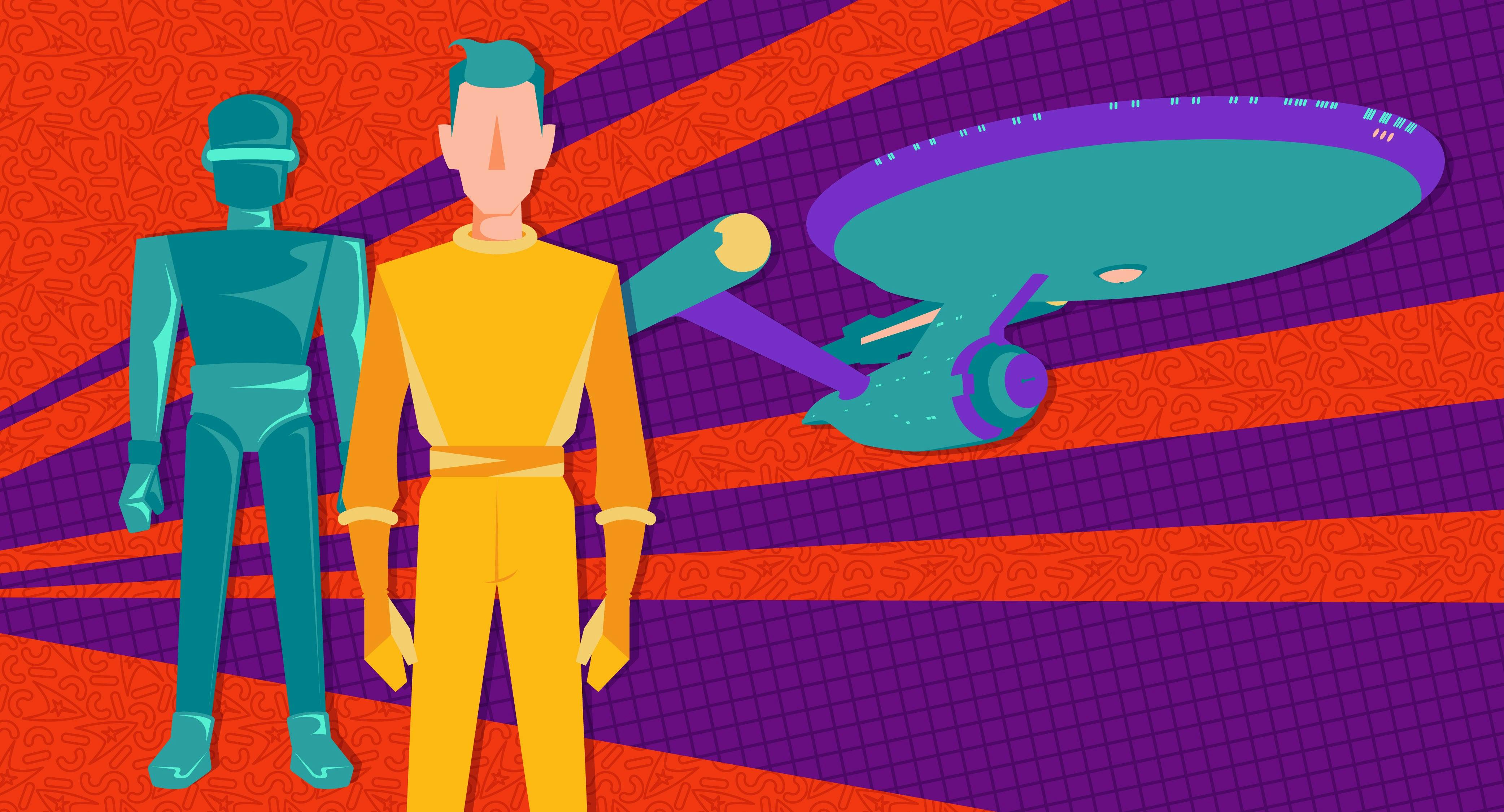
StarTrek.com
In the first episode of Star Trek: Strange New Worlds , “Strange New Worlds,” Captain Christopher Pike (Anson Mount), Science Officer Spock (Ethan Peck), and acting Number One La’An Noonien-Singh (Christine Chong) beam down to the planet Kiley 279. Thanks to the procedure performed by Nurse Chapel, the fact that they are human is disguised, allowing them to walk among the Kiley undetected.
After La’An incapacitates a pair of guards, she suggests the Enterprise “abduct” them: after all, the only negative effects will be that the Kiley guards will only experience some lost time if they are placed in medical sedation. As La’An makes this suggestion, the score by Nami Melumad features the trembling and distinctive sound of the theremin. The fact that the sound is so closely connected in the popular imagination with the idea of Unidentified Flying Objects has its origins in the soundtrack of the 1951 science fiction classic The Day the Earth Stood Still … and that’s far from the only way that the seminal film has had an influence on SNW.
The Day the Earth Stood Still
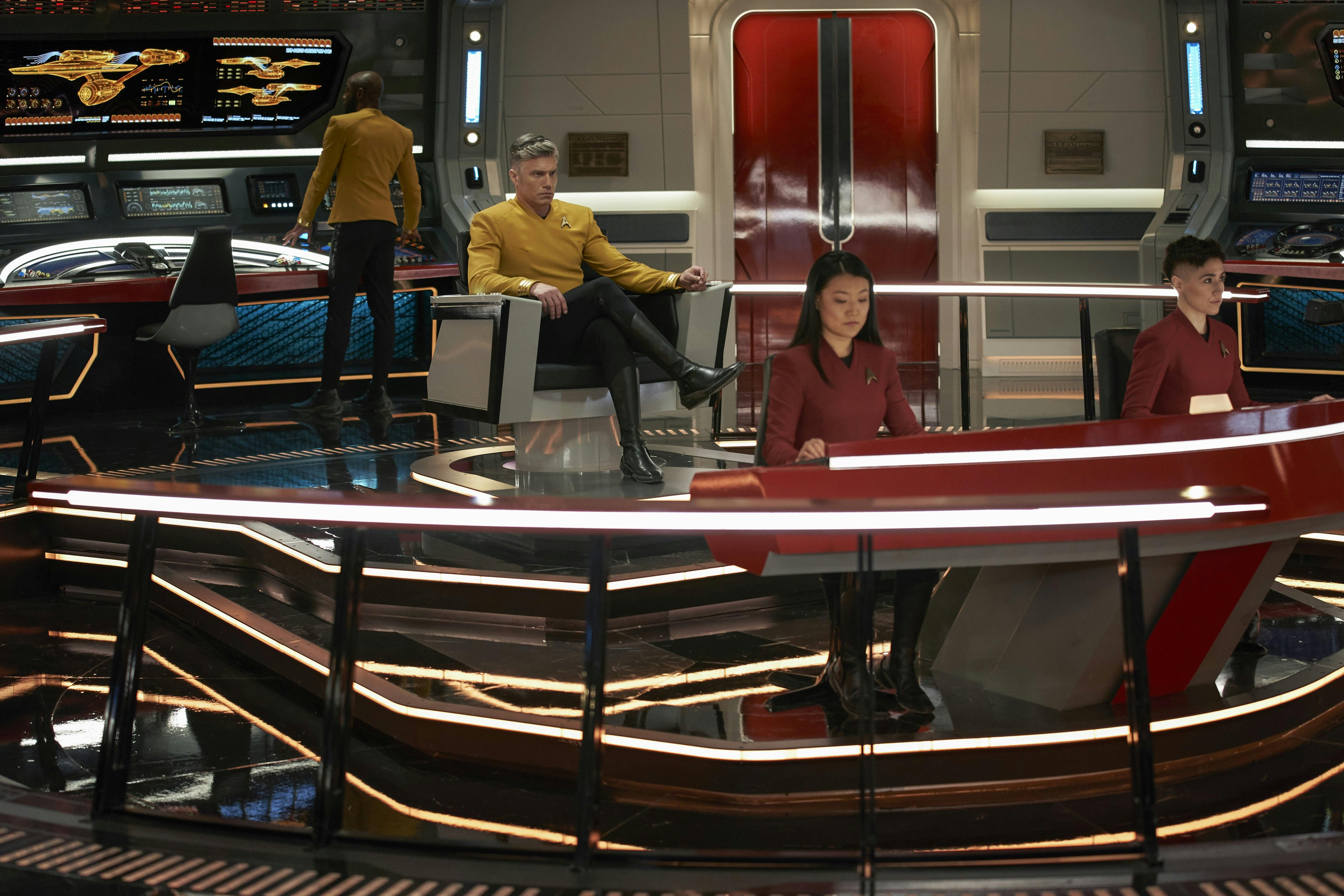
Robert Wise directed The Day the Earth Stood Still from a screenplay by Edmund H. North, which was adapted from a short story by Harry Bates. Wise, who went on to direct Star Trek: The Motion Picture three decades later, accepted the directing job for The Day the Earth Stood Still based on the strength of the screenplay: not just its story and characters, but also the themes it contained.
The story begins with a fourth-wall shattering sequence in which an UFO circles the globe, a montage that features appearances by many contemporary real-world journalists (whose faces and voices would be recognized by audiences in 1951). When the saucer lands in Washington, DC, a spacesuit-clad figure named Klaatu (Michael Rennie) emerges and is immediately shot by military forces. This causes a second occupant, Gort (Lock Martin), to emerge from the UFO. Klaatu asks Gort to stand down as he is taken to a hospital for treatment.
Earth authorities subsequently detain Klaatu, but he escapes and adopts the identity of a human named “Carpenter.” Klaatu briefly poses as a human and learns more about our violent and war-torn society. However, his true identity is eventually revealed, and he is killed attempting to evade authorities. Thanks to the effort of a human, Helen Benson (Patricia Neal), Klaatu is returned to the saucer.
Gort uses a device that is able to temporarily revive Klaatu, and he appears before a crowd gathered around his ship to deliver a climactic message. He informs the people of Earth that Gort is a member of a robot force constructed by the citizens of the galaxy to enforce universal peace. “There must be security for all or no one is secure,” Klaatu tells the people of Earth. It’s out of any one individual’s hands: Gort and the rest of the force will destroy Earth if humans cannot renounce violence and learn to live in peace.
A Message from Above

In a commentary track for The Day the Earth Stood Still , Nicholas Meyer, the writer and director of Star Trek II: The Wrath of Khan conducted an interview with Wise about the 1951 film. In addition to the story and themes, Wise asserts that there was another reason he was so enthusiastic about making the film.
“I’ve always been a strong believer in UFOs, in the existence of UFOs,” Wise told Meyer. Wise went on to explain the idea of an extraterrestrial intelligence coming to Earth and proving not to be a monster but rather a harbinger of peace appealed to him.
According to Space and the American Imagination by Howard E. McCurdy, UFO sightings by Americans began in 1947. In the wake of the events that occurred in Roswell that year, societies centered on the idea that extraterrestrial visitors had arrived to save Earth from destruction began to arise. But these heralds were not supernatural in nature. McCurdy writes, “[UFOs] were the product of advanced science, evidence of the length to which technology could carry a civilization.”
Strange New Worlds
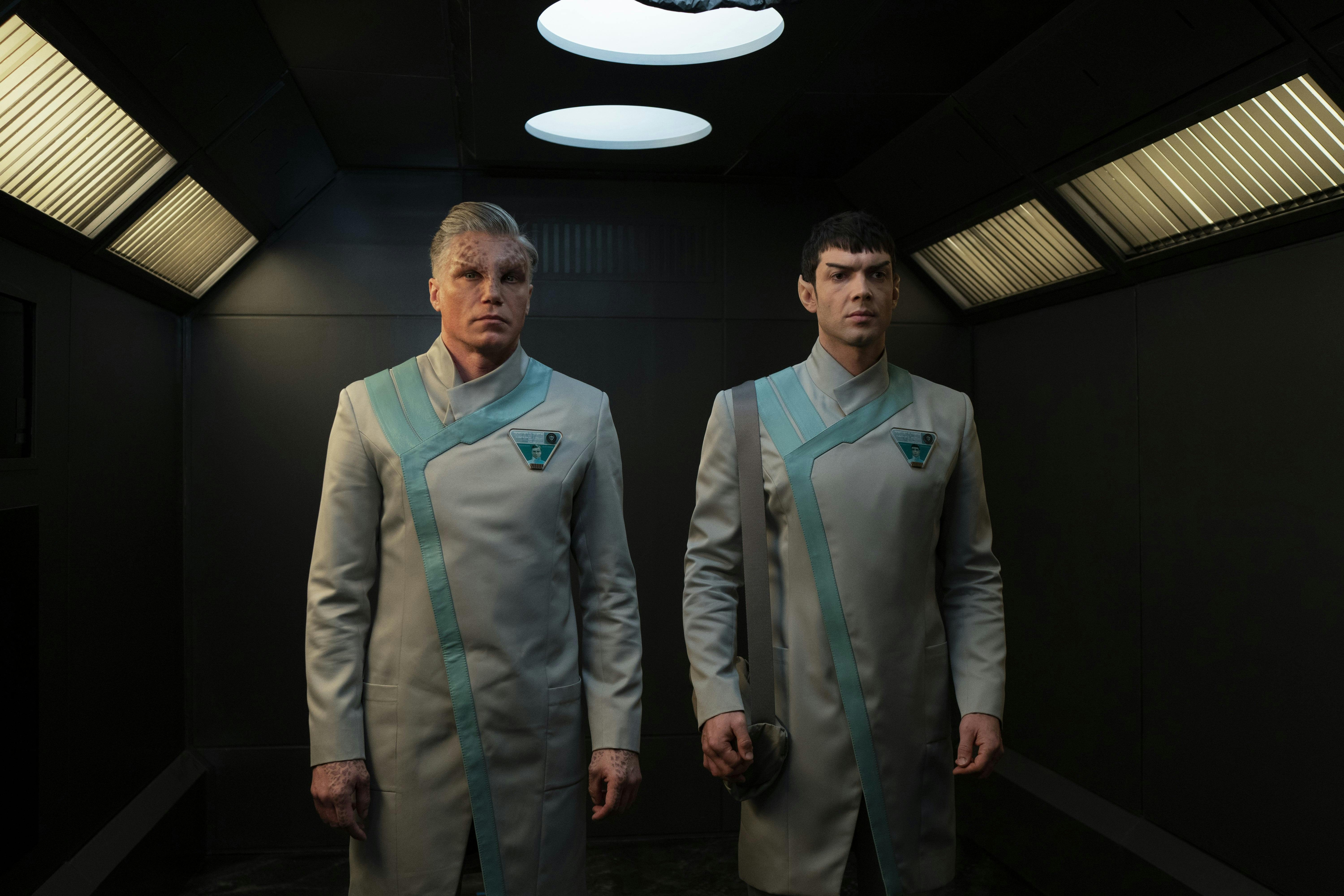
The parallels between SNW and The Day the Earth Stood Still begin to emerge in the first episode’s opening scenes, as the people of Kiley 279 report the appearance of an UFO above their planet. While the U.S.S. Archer may have a nacelle attached to its saucer, the sequence nevertheless heavily evokes the opening of the classic sci-fi movie.
The allusion is locked down by the subsequent sequence, which not only shows Pike watching the film as he cooks breakfast for himself and his companion, but also includes dialogue confirming he watches the movie about as frequently as William Riker visits Captain Jonathan Archer on the holodeck. As Pike watches the movie, we see snippets of the scene in which Klaatu delivers his climactic speech, including a meaningful shot of the faces of the humans listening to his words on the lawn surrounding the saucer.
This shot in The Day the Earth Stood Still plays an important role: it is a mirror image for the movie-viewing audience, who are also listening to Klaatu’s message. By showing the faces of the people in the movie giving their rapt attention to Klaatu, the distance between the crowd watching the film and the crowd on the Washington, DC lawn collapses.
In the third act of SNW’s pilot, after the away team has rescued Una and the other Starfleet officers, Pike requests the Kiley guards “take [him] to [their] leader.” From here, Pike fully accepts his place in the role occupied by Klaatu in The Day the Earth Stood Still : the extraterrestrial visitor tasked with delivering a message… and an ultimatum.
Pike’s Message
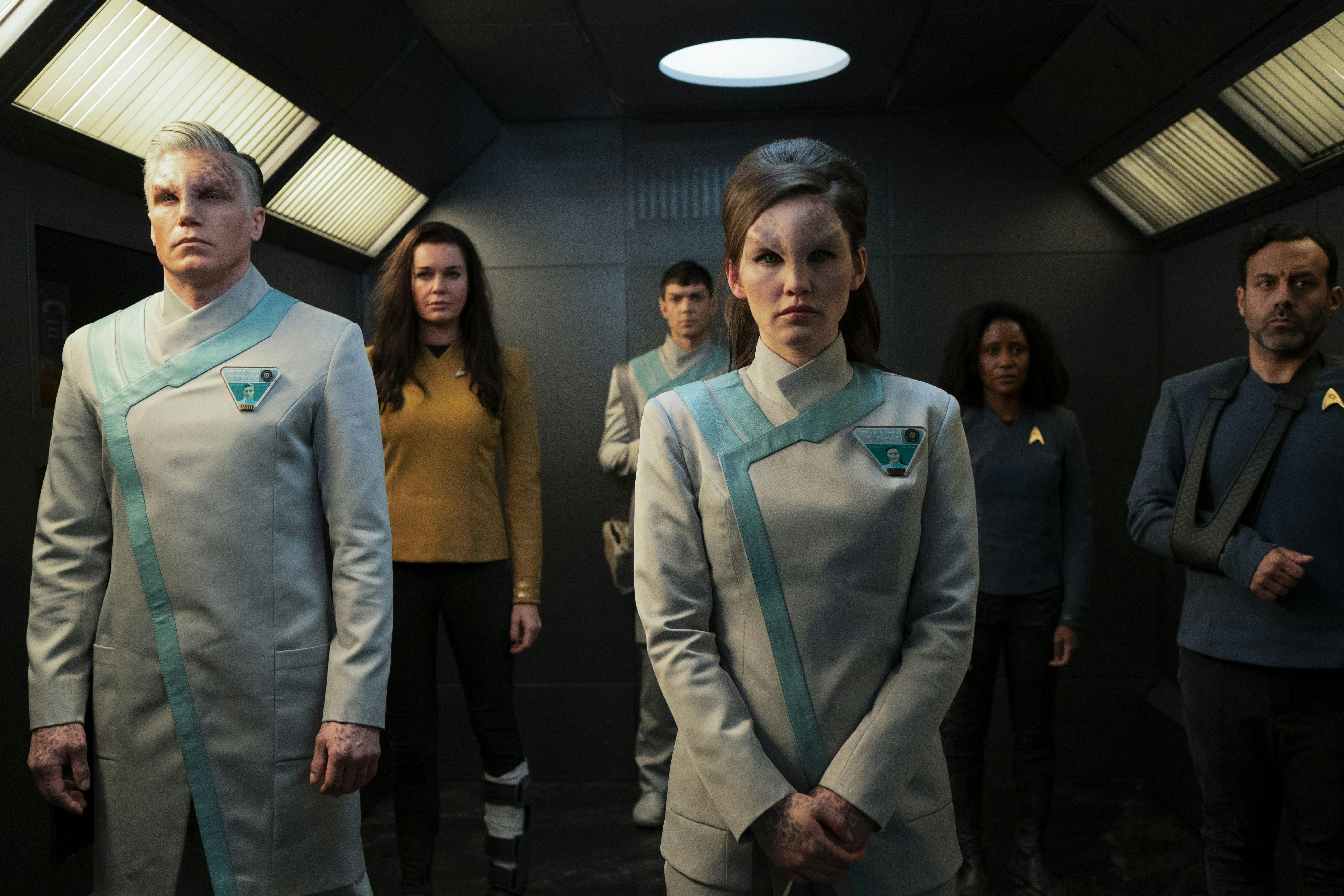
Pike uses the arrival of his “flying saucer” above Kiley 279 to seize the attention of the Kiley. Once a national broadcast is taking place, he appears in person to deliver his climactic speech. Just like the climax of The Day the Earth Stood Still , in which Klaatu’s message was directed towards the audiences both within and watching the movie, Pike’s message is clearly directed towards not just the Kiley, but also the Earth audience in 2022.
When they first arrived on Kiley 279, dialogue between Pike and Spock established the similarities between the state of the 23rd century Kiley society and the state of Earth society today, observing that the civil unrest recalled “Old Earth” and the United States of the 21st century. This comparison is driven home as Pike delivers his speech, and we see a recreation of the shot of the human crowd in The Day the Earth Stood Still, but with Kiley faces standing in for (but still representing) humans.
Just as Klaatu informs the people of Earth they are headed for destruction, Pike warns the people of Kiley 279 that they are hurling towards what appears to be a very dire fate indeed. However, while Klaatu’s companion Gort will be the source of Earth’s destruction in The Day the Earth Stood Still , the (soon-to-be-named) Prime Directive prevents Pike from enforcing any ultimatum on the people of Kiley. Nevertheless, it seems clear that the Kiley do not need help destroying themselves.
Pike delivers his own ultimatum: the Kiley can continue in their conflicts with one another, or they can unify in order to accomplish something greater: developing warp capabilities and joining the Federation.
The Day Kiley 279 Stood Still
In The Day the Earth Stood Still , Klaatu’s ultimatum is clear: humans must learn to live in peace or they will be destroyed. But on SNW, although Pike’s companion may speak in monotone, he is not a robot armed with the world destroying ability to enforce an ultimatum. Instead, Spock is a half-human half-Vulcan armed with logic.
And while the idea that the UFO is not supernatural but rather from advanced science does apply to the arrival of the Enterprise in SNW, the Enterprise goes one step further. While the Kiley represent humanity in the 21st Century and Pike represents humanity in the 23rd Century, both the speaker and the audience both represent us (a fact further driven home by Pike being disguised as a Kiley for part of the episode).
The Enterprise isn’t a messenger from above or from another civilization, the Enterprise is a messenger sent by ourselves. And while the ultimatum Pike offers cannot be enforced by a robotic police force, it is supported by the logic offered by Spock. Given the ultimatum is between destroying ourselves or using science to build a better world for everyone, there is no choice: only an obligation to commit to the latter.
A Strange New Hope
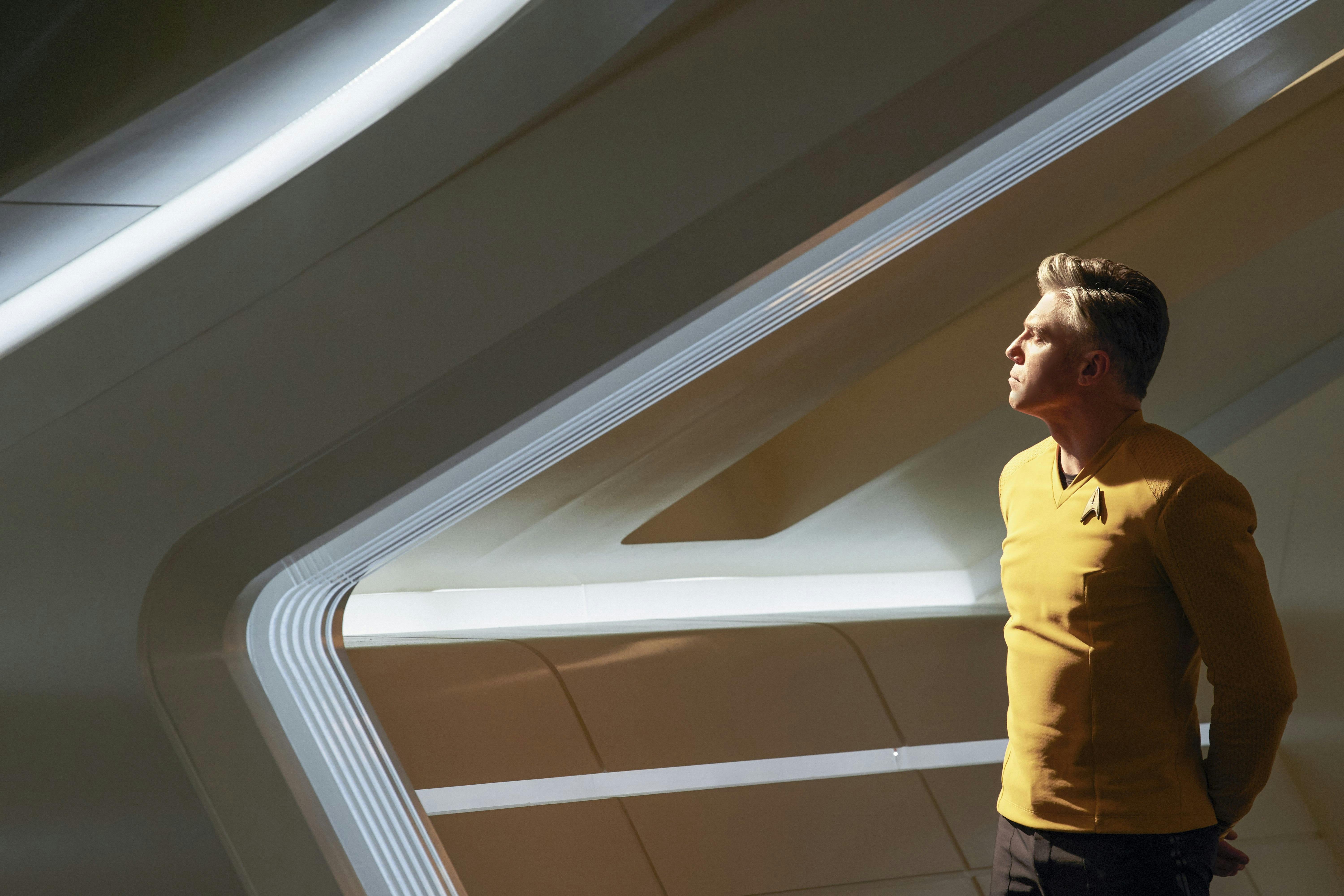
In the aforementioned commentary track to The Day the Earth Stood Still , Meyer points out that the peace “offered” by Gort isn’t exactly voluntary, but rather fascistic in nature. The response Wise has to Meyer is somewhat pessimistic, asking how the governments of the world could be persuaded to renounce violence except in the face of an overhanging existential threat.
By contrast, the ultimatum offered by Pike in SNW is characterized by hope. While the Enterprise may possess the firepower to dominate the people of Kiley 279, General Order One forbids Pike from enforcing his ultimatum in the way Gort enforces the one delivered by Klaatu. Instead of being motivated by their destruction, the Kiley are inspired by the aspirational aspects of the opposite side of the ultimatum, embodied by Pike and the rest of the glimpses of the Federation that they have received.
In some of the final scenes of the SNW pilot, we see the Kiley take inspiration from their photographs of the Archer and the Enterprise , beginning to reverse engineer the ships for their space program as they follow the example set by Pike. Once again, the Kiley can be considered a mirror for humanity, including steps we have already taken; consider, for example, that in 1976 Trekkies ensured the first NASA space shuttle was named Enterprise .
But will humanity’s future continue to parallel the progress made by the Kiley as they are inspired by the Federation’s example? SNW is showing us where we could go if we can avoid destroying ourselves and instead achieve unification; the kind of security we could achieve if we put aside factions, personal avarice, and war, and instead focused on science, personal growth, and exploration.
No wonder the Kiley find the Federation aspirational. Aren’t you inspired to follow that path, too?
Get Updates By Email
Avery Kaplan (she/her) is the Features Editor at Comics Beat. You can also find her writing on NeoText, Geek Girl Authority, Comics Bookcase, and in many issues of the Eisner Award-winning PanelxPanel. She is the co-host of the Matrix 404 podcast and the Comm Officer at Prism Comics. Find her on Twitter @averykaplan6
Star Trek: Strange New Worlds streams exclusively on Paramount+ in the U.S., U.K., Australia, Latin America, Brazil, South Korea, France, Italy, Germany, Switzerland and Austria. In addition, the series airs on Bell Media’s CTV Sci-Fi Channel and streams on Crave in Canada and on SkyShowtime in the Nordics, the Netherlands, Spain, Portugal and Central and Eastern Europe. Star Trek: Strange New Worlds is distributed by Paramount Global Content Distribution.

Planet classifications
- Edit source
- View history
The Planet Classification System was developed by the Federation as a means of conveniently categorizing planets using a uniform criteria consisting of a number of elements including, but not limited to: atmospheric composition, age, surface temperature, size, and the presence of life. The system uses the Terran alphabet, more specifically the Latin alphabet to designate the different planetary classes.

Planetary classes [ ]
- Class A Geothermal ( Gothos )
- Class B Geomorteus ( Mercury )
- Class C Geoinactive ( Psi 2000 )
- Class D Asteroid/Moon ( Luna )
- Class E Geoplastic ( Excalbia )
- Class F Geometallic ( Janus VI )
- Class G Geocrystaline ( Delta Vega )
- Class H Desert ( Rigel XII )
- Class I Gas Supergiant ( Q'tahL )
- Class J Gas Giant ( Jupiter )
- Class K Adaptable ( Mars )
- Class L Marginal ( Indri VIII )
- Class M Terrestrial ( Earth )
- Class N Reducing ( Venus )
- Class O Pelagic ( Argo )
- Class P Glaciated ( Breen )
- Class Q Variable ( Genesis Planet )
- Class R Rogue ( Dakala )
- Class S and T Ultragiants
- Class X , Y and Z Demon ( Tholian homeworld (Class Y))
External links [ ]
- Planetary classification article at Memory Alpha , the canon Star Trek wiki.
- Planetary classification article at Memory Beta , the non-canon Star Trek wiki.

- Literature & Fiction
- Genre Fiction

Download the free Kindle app and start reading Kindle books instantly on your smartphone, tablet, or computer - no Kindle device required .
Read instantly on your browser with Kindle for Web.
Using your mobile phone camera - scan the code below and download the Kindle app.

Image Unavailable

- To view this video download Flash Player

Follow the author

Future Perfect: How Star Trek Conquered Planet Earth Paperback – June 1, 1999
- Print length 96 pages
- Language English
- Publisher Penguin Books
- Publication date June 1, 1999
- Dimensions 5.25 x 0.5 x 7.75 inches
- ISBN-10 0140277986
- ISBN-13 978-0140277982
- See all details

Product details
- Publisher : Penguin Books; New Ed edition (June 1, 1999)
- Language : English
- Paperback : 96 pages
- ISBN-10 : 0140277986
- ISBN-13 : 978-0140277982
- Item Weight : 8.8 ounces
- Dimensions : 5.25 x 0.5 x 7.75 inches
- #11,595 in TV, Movie & Game Tie-In Fiction
- #13,711 in Television (Books)
- #67,514 in Performing Arts (Books)
About the author
Jeff greenwald.
Discover more of the author’s books, see similar authors, read author blogs and more
Customer reviews
Customer Reviews, including Product Star Ratings help customers to learn more about the product and decide whether it is the right product for them.
To calculate the overall star rating and percentage breakdown by star, we don’t use a simple average. Instead, our system considers things like how recent a review is and if the reviewer bought the item on Amazon. It also analyzed reviews to verify trustworthiness.
- Sort reviews by Top reviews Most recent Top reviews
Top reviews from the United States
There was a problem filtering reviews right now. please try again later..
Top reviews from other countries
- Amazon Newsletter
- About Amazon
- Accessibility
- Sustainability
- Press Center
- Investor Relations
- Amazon Devices
- Amazon Science
- Sell on Amazon
- Sell apps on Amazon
- Supply to Amazon
- Protect & Build Your Brand
- Become an Affiliate
- Become a Delivery Driver
- Start a Package Delivery Business
- Advertise Your Products
- Self-Publish with Us
- Become an Amazon Hub Partner
- › See More Ways to Make Money
- Amazon Visa
- Amazon Store Card
- Amazon Secured Card
- Amazon Business Card
- Shop with Points
- Credit Card Marketplace
- Reload Your Balance
- Amazon Currency Converter
- Your Account
- Your Orders
- Shipping Rates & Policies
- Amazon Prime
- Returns & Replacements
- Manage Your Content and Devices
- Recalls and Product Safety Alerts
- Conditions of Use
- Privacy Notice
- Consumer Health Data Privacy Disclosure
- Your Ads Privacy Choices

Top 10 Star Trek Destinations Chosen by NASA Scientists
What would happen if the crew of the Starship Enterprise handed over the controls to NASA scientists and engineers? It turns out many are avid Star Trek fans with lengthy itineraries in mind. We asked a few of them to pick their favorite destinations in the Star Trek universe, to tell us why, and to let us know if they resemble any of the thousands of actual exoplanets—planets orbiting other stars—that have been discovered so far.
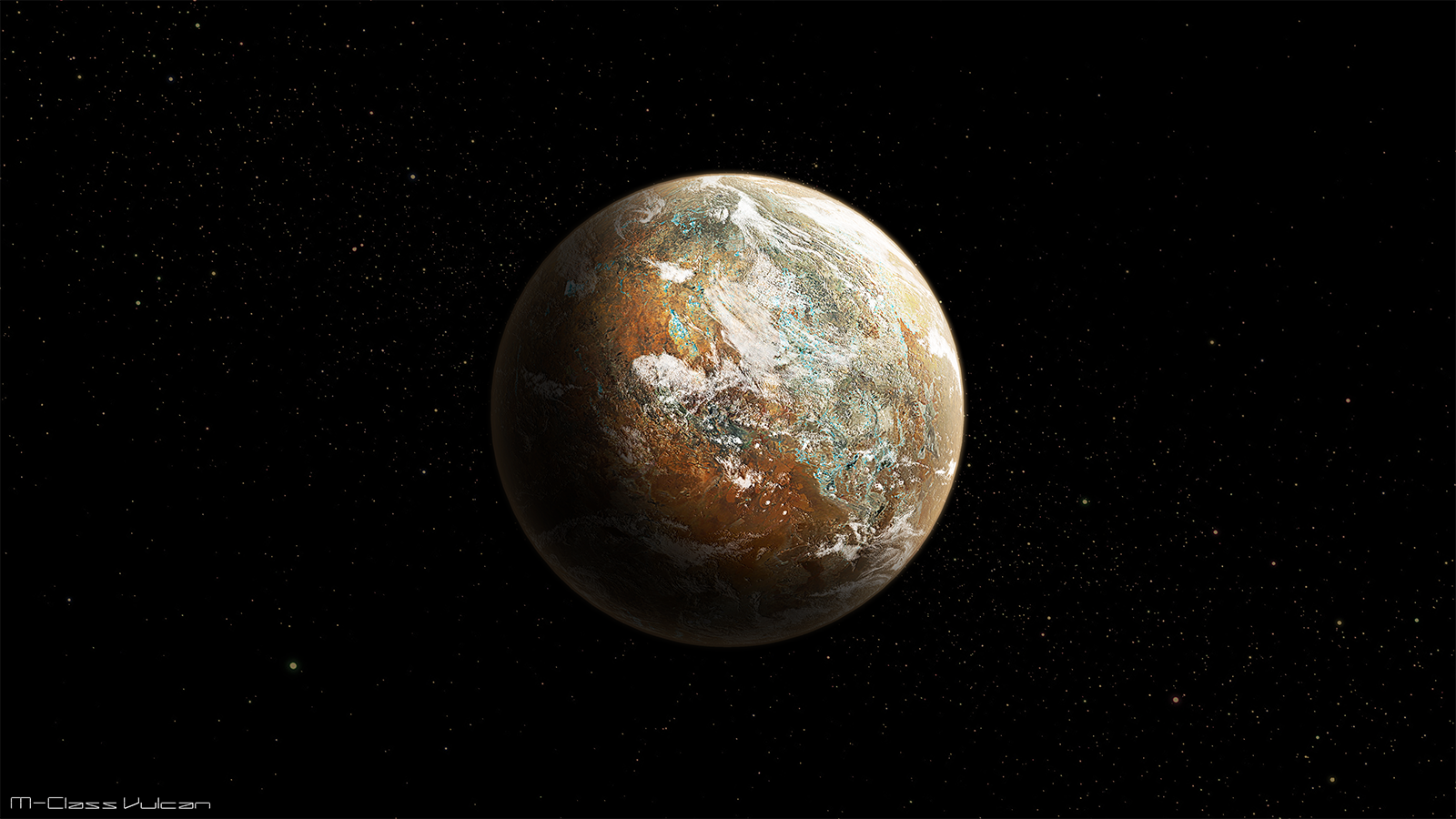
What is perhaps the most famous Star Trek planet was placed by creator Gene Roddenberry in a real star system: 40 Eridani. This trinary system of three dwarf stars, about 16 light-years from Earth, could play host to exoplanets; none have been detected there so far. The most massive is 40 Eridani A , chosen as Vulcan’s home world. Home to the “pointy eared, green blooded” Vulcans and to Star Trek’s iconic Mr. Spock, Vulcan is said to be a hotter, more massive planet than Earth, with stronger gravity and a thinner atmosphere. Desert and mountainous expanses are interspersed with seas. The planet makes an appearance in several Star Trek films and series episodes and (spoiler alert) is destroyed in J.J. Abrams’ alternate timeline. An example of a real exoplanet being destroyed—by its own sun, not vengeful aliens—is HD 209458b , a “hot Jupiter” orbiting so close to its star that its atmosphere is being blown away into space, leaving a large, detectable tail.
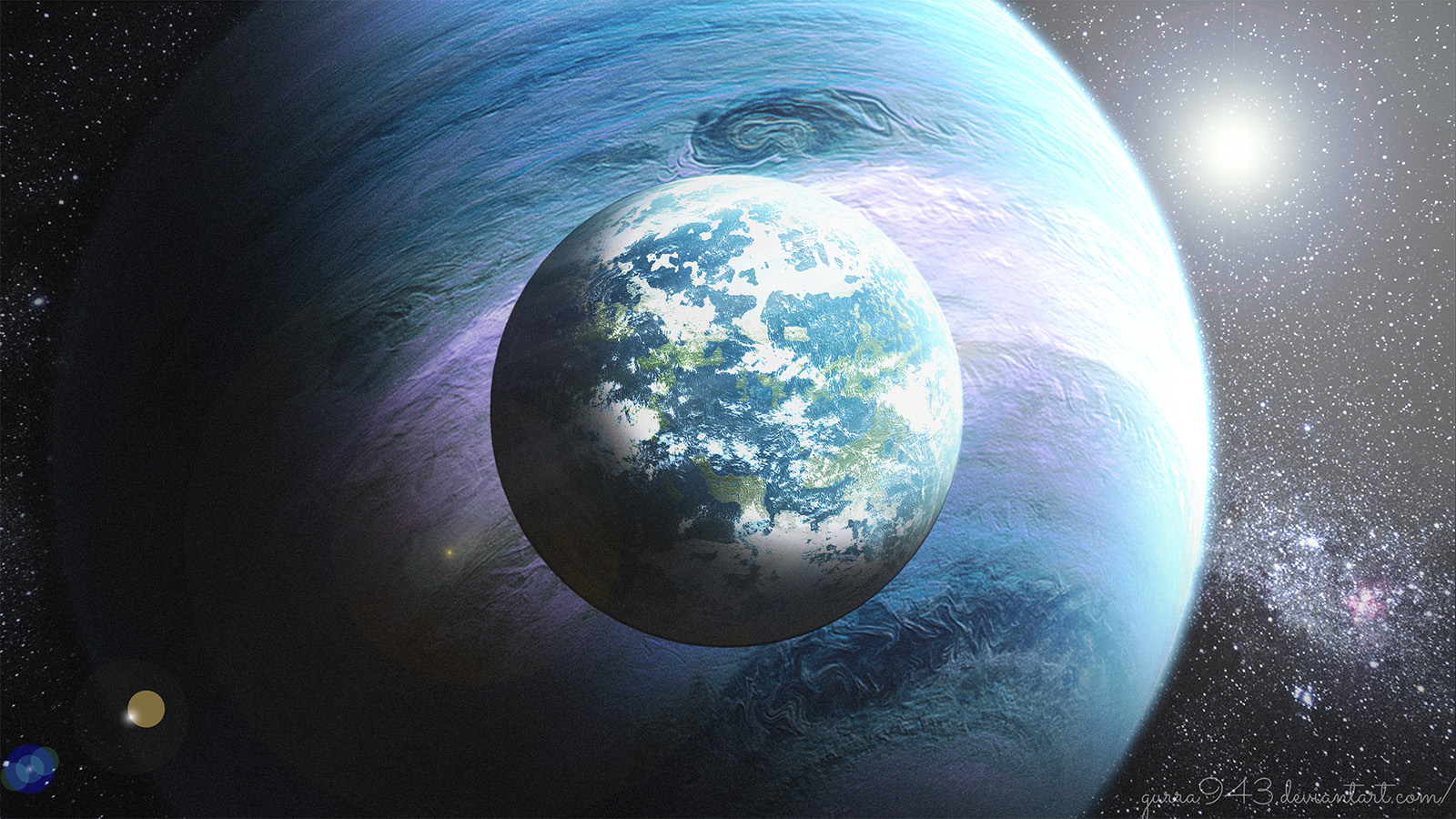
An icy “M-class” (Star Trek's term for “Earth-like”) moon of a much larger planet—a gas giant—that is home to soft-spoken humanoids with blue skin, white hair and stylish antennae. A bit of a dust-up takes place in the original Star Trek series when an Orion poses as an Andorian during an ambassadorial mission (“Journey to Babel”). Definitive “exo-moons” have yet to be discovered, but some could be both icy and habitable. In our solar system, gas giants play host to icy moons, such as Jupiter’s Europa or Saturn’s Enceladus , that possess subsurface oceans locked inside shells of ice. NASA missions are searching for lifeforms that might exist in these cold, dark habitats.
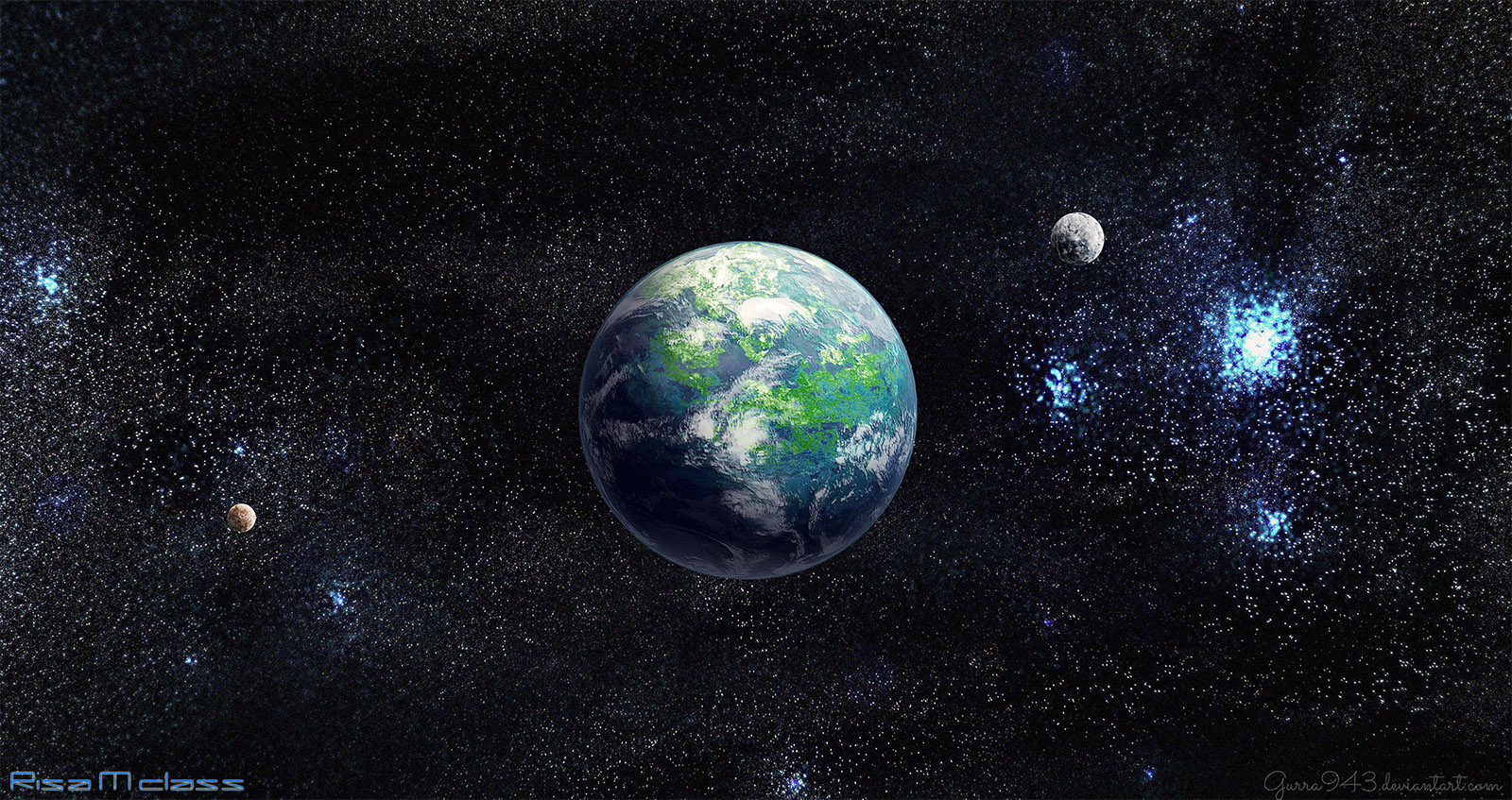
Another Trek M-class planet known for its engineered tropical climate and its welcoming humanoid population. This earns it a designation as a “pleasure planet” from the United Federation of Planets, of which it is a member. Crew members from the “Next Generation,” “Deep Space Nine” and “Enterprise” series all paid visits there. The planet is said to orbit a binary , or double, star system—in Star Trek fan lore, Epsilon Ceti, a real star system some 79 light-years from Earth. While no real planets have yet been discovered around these stars, many exoplanets have been found in orbit around binaries. The first unambiguous such discovery, Kepler-16b found in 2011, is cold, gaseous and Saturn-sized, but still invites comparisons to Tatooine , the double-sunset planet in the competing space franchise Star Wars. A 2014 study suggested that as much as half the stars that play host to exoplanets could be binaries– equaling billions of worlds.
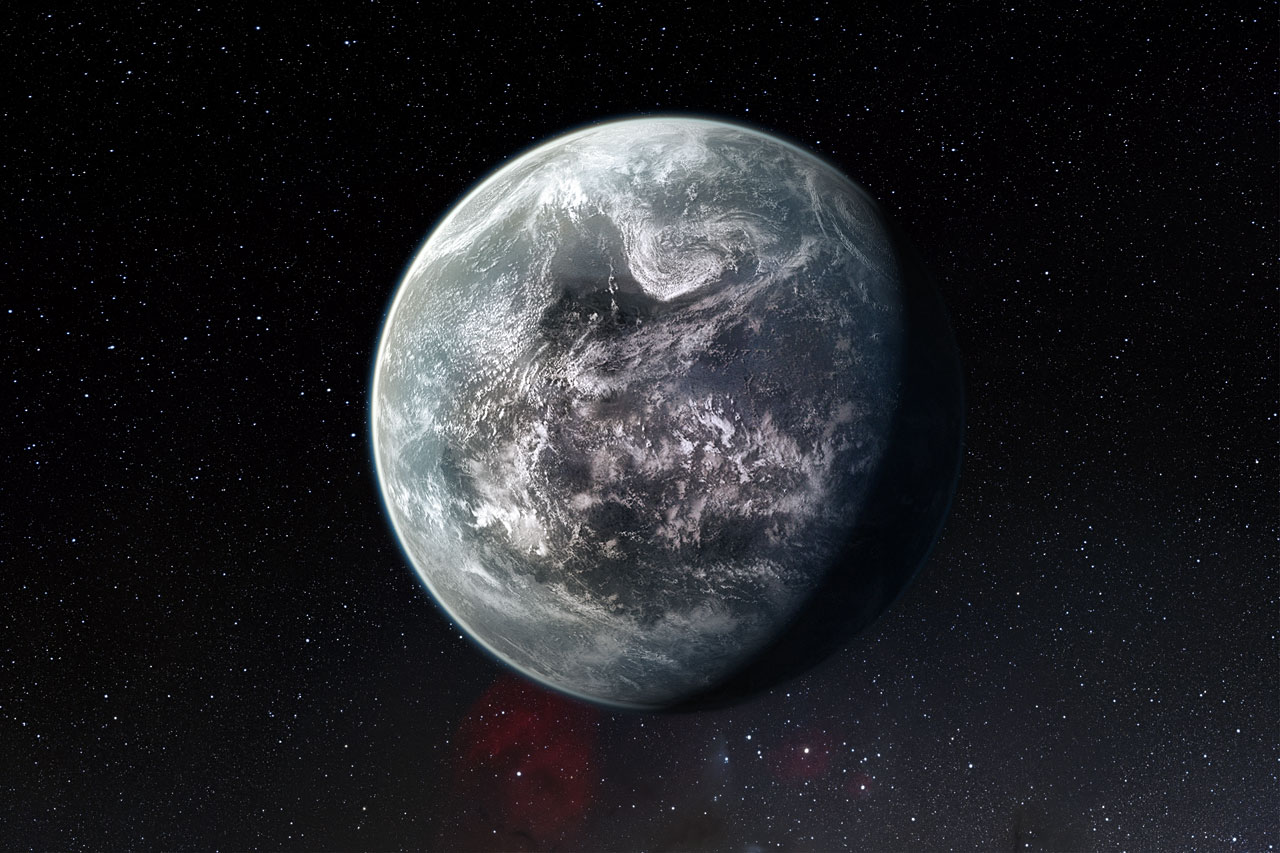
4. “Shore Leave” planet, Omicron Delta region
This is another amusement park of a planet—provided someone lets you in on it before you beam down. Unwitting members of the original crew are assailed by strafing aircraft, a jousting knight and a laughing bully named Finnegan (“Shore Leave”) before they realize it’s all just in good fun—manufactured in underground factories straight from the crew members’ imaginations. In real life, astronauts aboard the International Space Station print out plastic tools and containers with their own 3-D printer, and NASA’s Jet Propulsion Laboratory in Pasadena, Calif., is among the research centers experimenting with this technology. But the “Shore Leave” planet takes it to a whole new level.
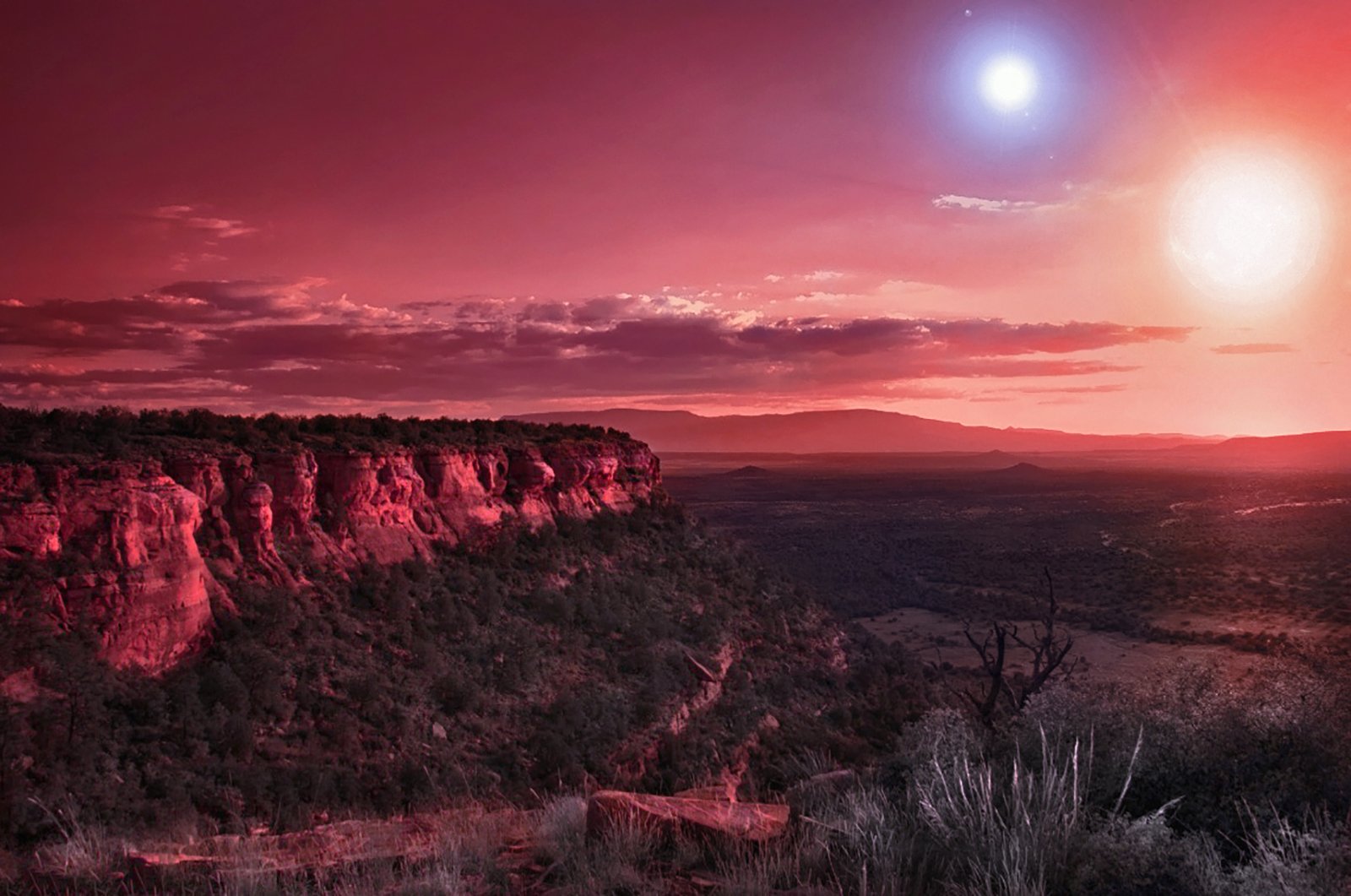
“Star Trek: Into Darkness” finds Captain Kirk and Dr. McCoy fleeing from chalk-skinned aliens through a red jungle. Welcome to planet Nibiru. In the second installment of the latest round of Star Trek films Kirk interferes, yet again, with a primitive culture, even if it is to save their lives. Red or even black vegetation could cover land surfaces on real exoplanets that orbit cooler, redder stars, an adaptation meant to gather as much light for photosynthesis as possible. Several planets discovered by NASA’s Kepler space telescope could fit this profile, orbiting in the “habitable zones ” of red dwarf stars—where liquid water can exist on a planetary surface. Perhaps the most famous is Kepler-186f , only 10 percent larger than Earth in diameter, orbiting a star some 500 light-years away. At high noon, the surface of this planet would look something like dusk on Earth.
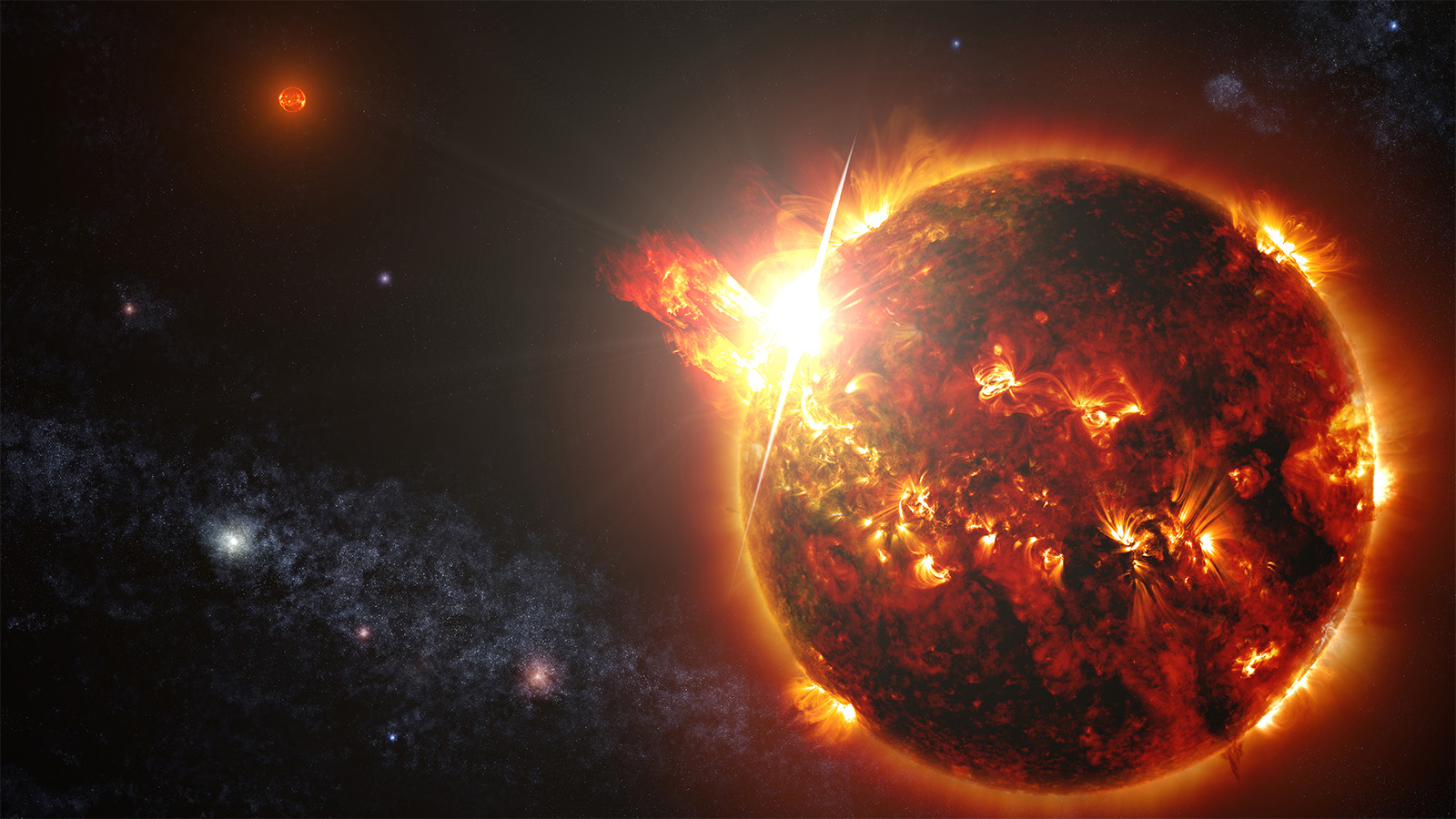
6. Wolf 359
A star best known in the Star Trek universe as the site of a fierce battle in which a multitude of “Star Trek: Next Generation” ships are defeated by the Borg (“Best of Both Worlds”). But Wolf 359 is a real star, one of the closest to Earth at a distance of 7.8 light-years. Wolf 359 is also a likely observational target for the Kepler space telescope in the upcoming Campaign 14 of its “K2” mission.
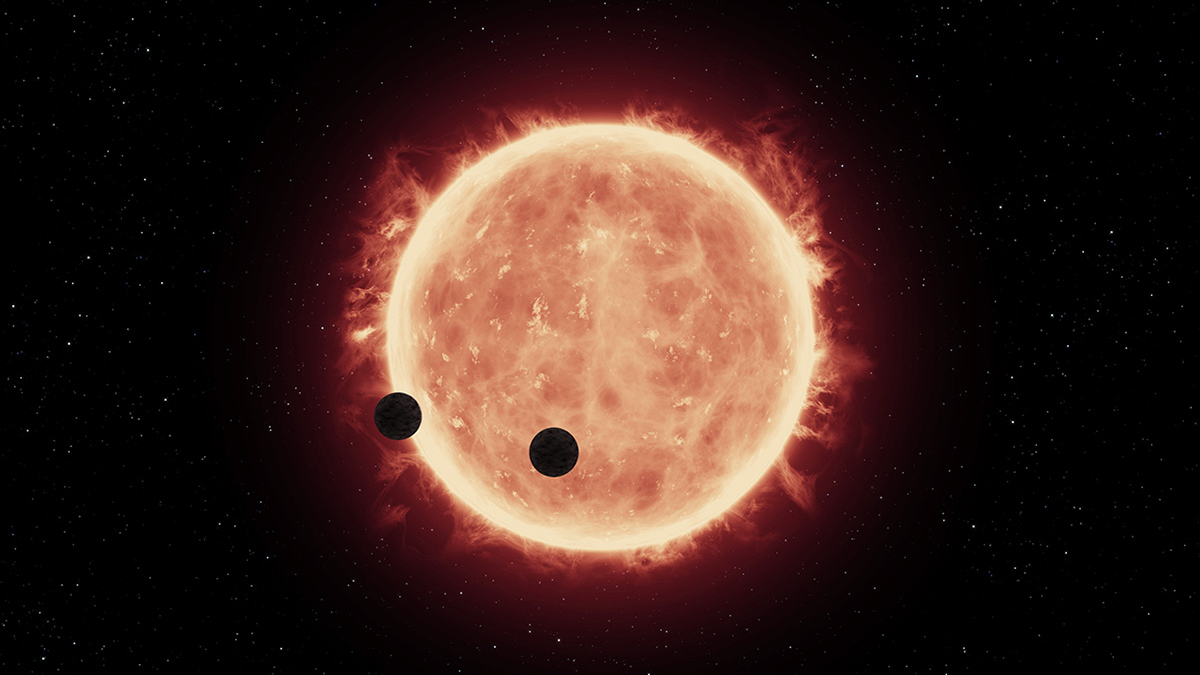
7. Eminiar VII/Vendikar
Another case of Captain Kirk playing fast and loose with the Prime Directive—that is, the prohibition on interfering with civilizations on other planets (“A Taste of Armageddon”). These two planets are neighbors, sharing a star system. So, of course, they’ve been at war for centuries. Real exoplanets have shown no signs of interplanetary war, although multiple rocky worlds have been discovered orbiting single stars. One of the latest examples: A cool dwarf star called TRAPPIST-1 , orbited by three planets in Earth’s size-range; two have a chance of being in the star’s habitable zone, with possible Earth-like atmospheres. The Kepler space telescope will further study the star TRAPPIST-1 in the upcoming Campaign 12 of its “K2” mission.
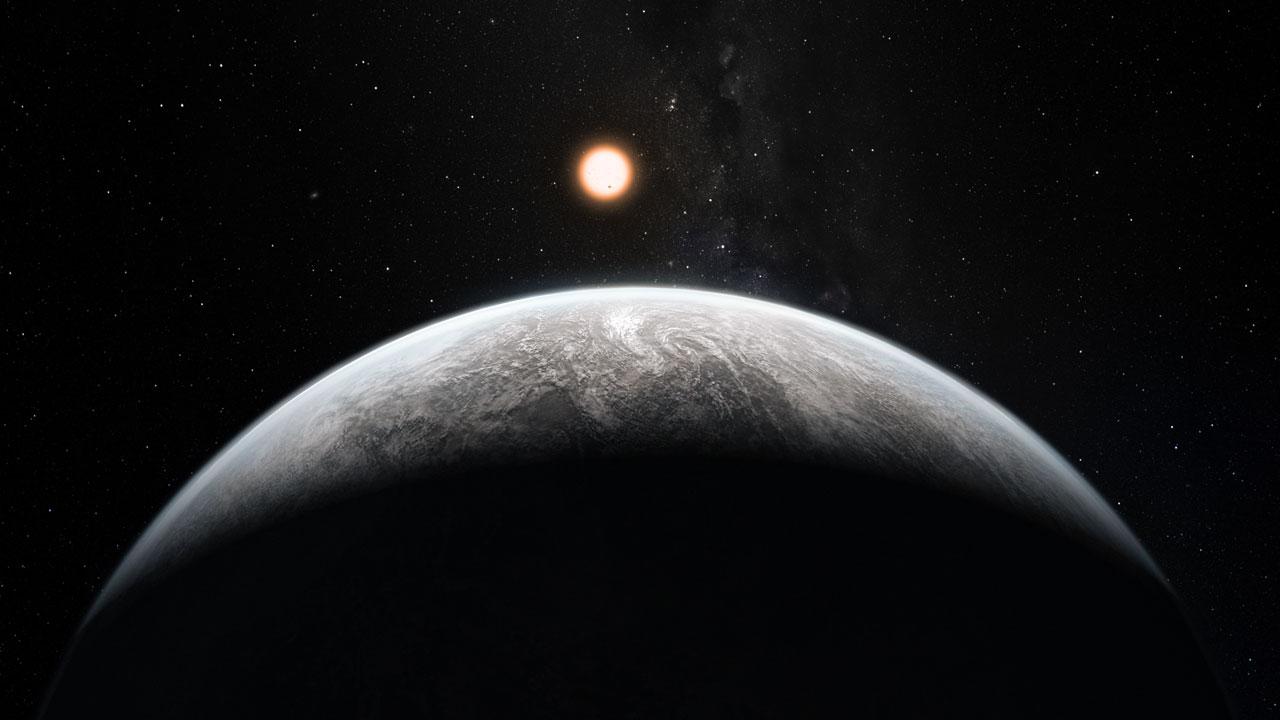
The planets Romulus and Remus are home to the Romulan Empire (ancient Rome, anyone?), although Remus seemed to have gotten the raw end of the deal. Remus is tidally locked, one face always turned to its star, where a lower caste of Romulan society labor in dilithium mines. Reference is made to Remus in the original series as the Enterprise gives chase to a Romulan warship, called a bird of prey (“Balance of Terror”), and in the film “Star Trek: Nemesis.” Tidally locked worlds might well be a real thing, with many possible candidates among the thousands of exoplanets discovered with NASA’s Kepler space telescope. The habitable portion of the surface of such planets might be confined to a band between the day and night sides called the “terminator zone” —a.k.a. the twilight zone. On these planets, one hemisphere would be seared by its sun, the other plunged permanently…into darkness.
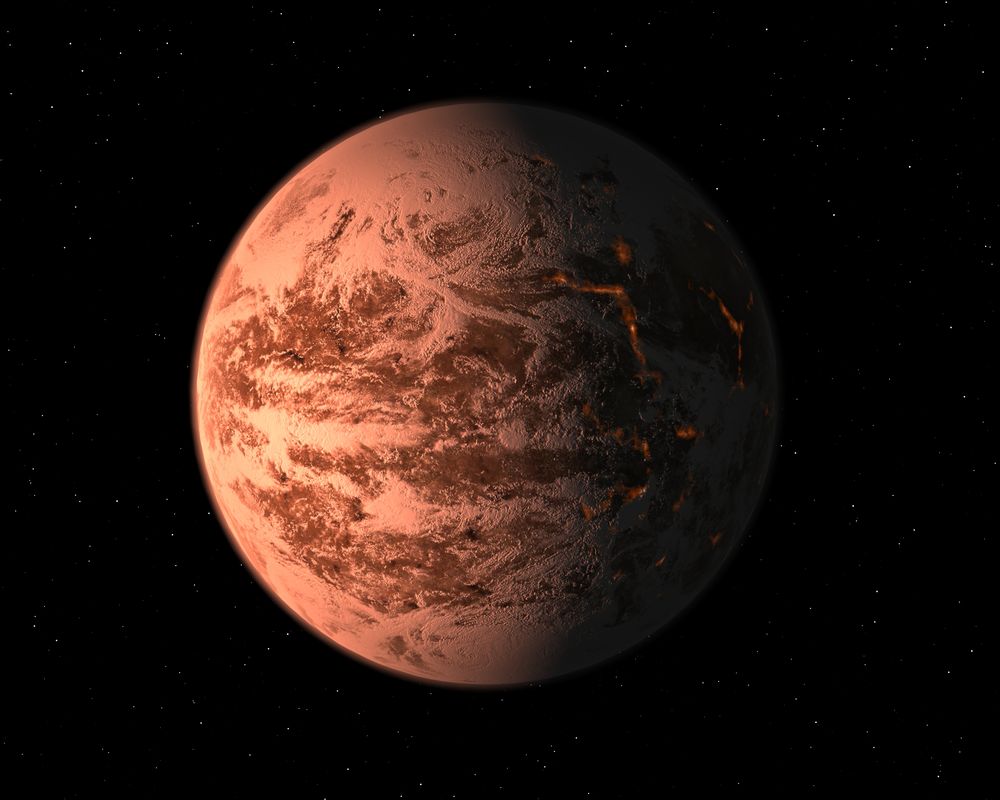
9. Janus VI
A rocky world lacking an atmosphere, perhaps similar to Mars, that is the site of a Federation mining colony (“Devil in the Dark,” original series). While humans must maintain an artificial underground environment to survive, the innards of the planet are a comfortable home to an alien species known as the “Horta.” Their rock-like biochemistry is based on silicon , rather than carbon, inspiring us to imagine the many forms life might take in the universe—some that might not be obvious at first.
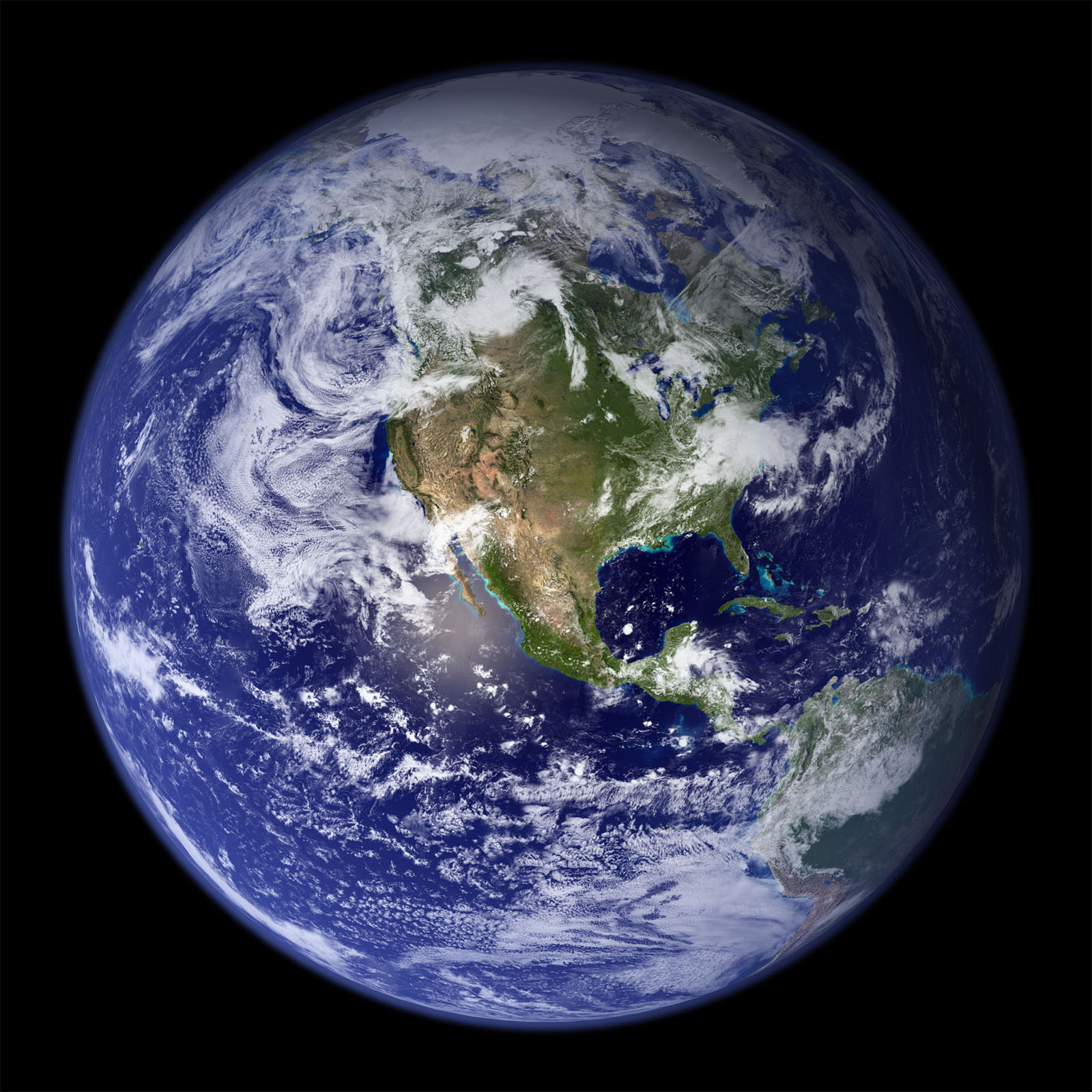
In the Star Trek universe, Earth is home to Starfleet Headquarters; the real Earth is, at least so far, the only life-bearing world we know. Earth returns again and again in Star Trek series and films, in many guises, from the raucous 1960s, to 1980s San Francisco (“Star Trek: The Voyage Home”), to a troubled 21 st century (“Star Trek VIII: First Contact”). Strange Earth analogs also appear, inhabited by centuries-old children (“Miri”) or a modern-day Roman Empire worried about TV ratings for its gladiatorial games (“Bread and Circuses”), both in the original series. No true Earth analogs have been discovered among the real exoplanets detected so far. But a new generation of space telescopes , designed to capture direct images of exoplanets in Earth’s size range, might one day reveal an alternative “pale blue dot.”
Related Terms
Explore more.
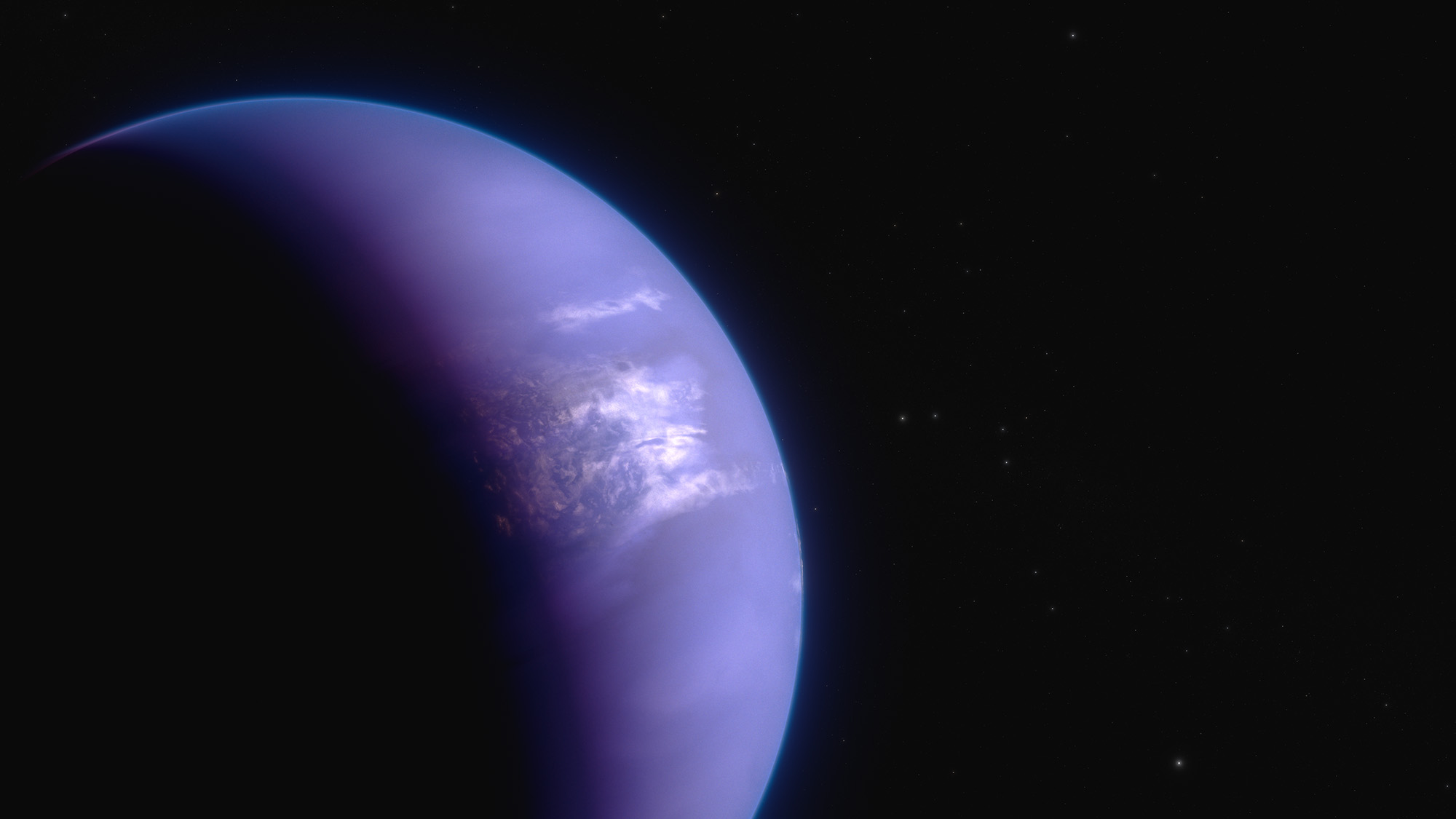
NASA’s Webb Maps Weather on Planet 280 Light-Years Away

That Starry Night Sky? It’s Full of Eclipses
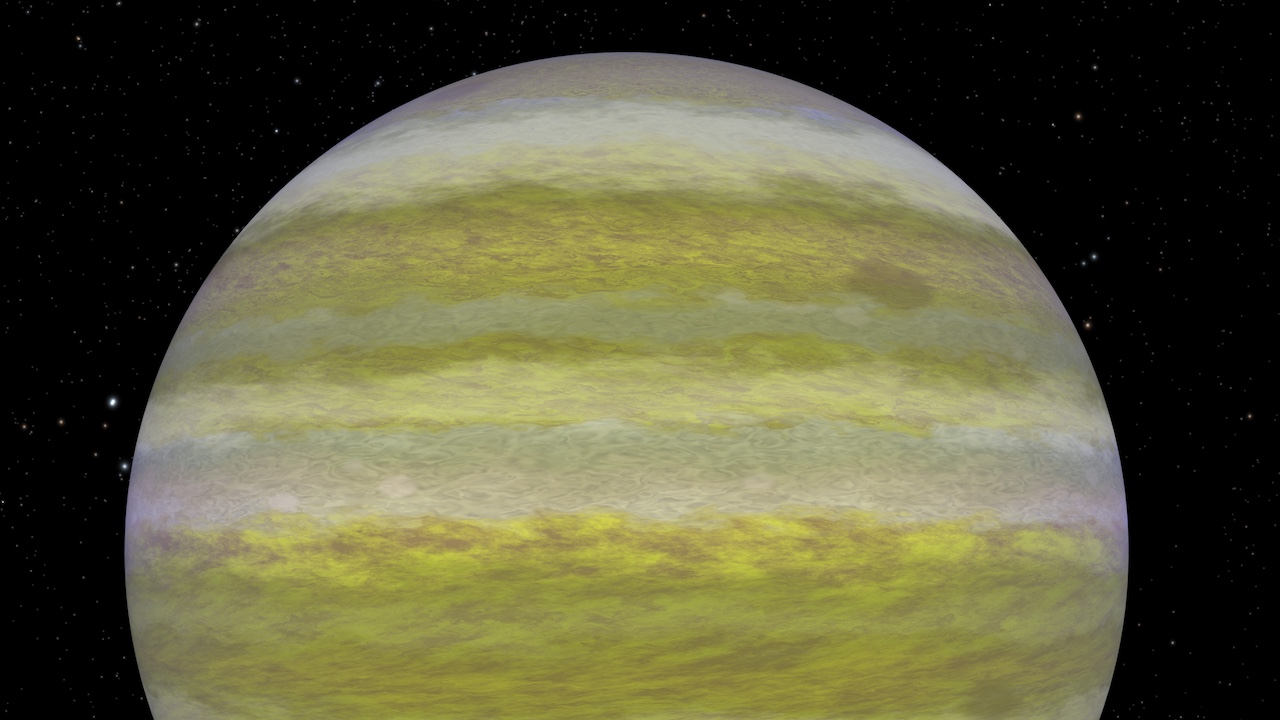
Discovery Alert: a Long Year for a ‘Cold Saturn’
Two recently discovered exoplanets, gas giants possibly similar to Saturn, could be candidates for further atmospheric investigation.
Discover More Topics From NASA
Search for Life

Black Holes

Screen Rant
6 star trek planets controlled by computers.

Your changes have been saved
Email Is sent
Please verify your email address.
You’ve reached your account maximum for followed topics.
Every Star Trek Series, Ranked Worst To Best
A great wesley crusher tng episode hinted at his best star trek destiny, star trek: lower decks season 5 - cast, story & everything we know.
- Advanced planet-controlling computers in Star Trek often lead to negative effects on civilizations they are supposed to protect.
- Star Trek showcases the dangers of overreliance on technology, while celebrating humanity's potential when working together.
- "Whistlespeak" in Star Trek: Discovery showcases a classic episode feel with concerns about the Prime Directive.
WARNING: Contains SPOILERS for Star Trek: Discovery season 5, episode 6, "Whistlespeak."
Some Star Trek planets have been controlled by advanced computers, some of which had more personality than others. In Star Trek: The Original Series, Captain James T. Kirk (William Shatner) encountered several advanced computer systems, and he developed a talent for talking them into destroying themselves. Whether these computers controlled the weather on their planet or determined the inhabitants' every move, they often had a negative effect on the civilizations they were supposed to be protecting. Star Trek' s often primitive, pre-warp civilizations made little progress when most of their lives were controlled by a computer they did not understand.
Star Trek continued to evolve the idea of advanced, planet-controlling computers, with examples popping up in Star Trek: The Next Generation, Star Trek: Lower Decks, and Star Trek: Discovery. Although Star Trek has always celebrated technology and the ways it can help people, the franchise has never shied away from depicting the dangers of an overreliance on technology. At its core, Star Trek is a celebration of humanity and the amazing things humans are capable of when they work together and work with technology.
There are 11 Star Trek TV series (and counting) over 58 years. From The Original Series to TNG to Strange New Worlds and Prodigy, we rank them all.
6 Landru On Beta III
Star trek: the original series season 1, episode 22 - "the return of the archons" & star trek: lower decks season 1, episode 10 - "no small parts", star trek: the original series.
In the Star Trek: The Original Series episode, "The Return of the Archons," Captain Kirk and his crew visit a planet ruled by a dictator named Landru (Charles Macauley). Landru and his Lawgivers control the society, which resembles 19th century Earth, allowing the inhabitants annual "Festivals" during which all crime is allowed. As Kirk and Spock (Leonard Nimoy) investigate, they discover that the original Landru helped save the planet from war 6,000 years ago by building an advanced computer to control the people.
Landru now exists only as a projection within the computer, and Kirk and Spock thwart him by convincing the computer to self-destruct. Although the USS Enterprise left crew members on the planet to help them rebuild their society, Landru reactivated himself sometime before 2380. As seen in the Star Trek: Lower Decks season 1 finale, "No Small Parts," the USS Cerritos revisited the planet and reminded the people not to listen to Landru.
Star Trek: Lower Decks season 1's finale coined the term "TOS" as meaning "Those Old Scientists" in canon.
5 Vaal On Gamma Trianguli VI
Star trek: the original series season 2, episode 9 - "the apple".
When the USS Enterprise visits a planet that appears to be a paradise, a landing party led by Captain Kirk encounter numerous dangers on the planet's surface. Several red-shirt-wearing members of the landing party are killed , and the rest of the team is unable to beam back to the ship. The Enterprise is also being pulled close to the planet with a tractor beam, as Chief Engineer Scotty (James Doohan) struggles to free it.
The computer orders the villagers to kill Kirk and his crew.
Captain Kirk and the landing party eventually realize that the primitive villagers serve a machine known as Vaal that maintains the planet's tropical climate and renders the inhabitants basically immortal. The computer orders the villagers to kill Kirk and his crew, but the landing party manages to outsmart them. Kirk orders the Enterprise to fire phasers at the dragon-like cave that is home to Vaal to drain its remaining power. The Enterprise then leaves the villagers to learn how to survive on their own.
4 The Custodian On Aldea
Star trek: the next generation season 1, episode 17 - "when the bough breaks", star trek: the next generation.
In this Star Trek: The Next Generation season 1 episode, Captain Jean-Luc Picard (Patrick Stewart) and the USS Enterprise-D stumble upon the planet of Aldea, which was once considered a myth. The Aldeans have access to advanced technology, but they have been unable to bear children for many years. All of the Aldeans' basic needs are taken care of by a computer called the Custodian, but the Aldeans have no real understanding of how this computer works.
When Captain Picard refuses to give the Aldeans any children from the Enterprise, they kidnap several kids from the ship. Dr. Beverly Crusher (Gates McFadden) discovers that the planetary shield surrounding the planet has exposed the inhabitants to radiation that rendered them infertile. Without the shield, the Aldeans will eventually be able to bear children again, but they will have to learn how to maintain and control the Custodian.
This episode of Star Trek: The Next Generation season 1 was not only one of Wesley Crusher's best, but also hinted at his important destiny.
3 AGIMUS On The Molmol's Homeworld
Star trek: lower decks season 2, episode 7 - "where pleasant fountains lie" & season 4, episode 7 - "a few badgeys more", star trek: lower decks.
With a tone more comedic and sometimes ridiculous than any previous iteration of Star Trek, Star Trek: Lower Decks lovingly pokes fun at the tropes and cliches that pop up across the franchise. Introduced in "Where Pleasant Fountains Lie," AGIMUS was a sentient computer who once pretended to be a supernatural being to control the inhabitants of a planet. After the USS Cerritos disconnected AGIMUS from the planet's network, the computer was to be taken to Daystrom Institute.
En route to the Self-Aware Megalomaniacal Computer Storage area at the Institute, AGIMUS tried to turn Ensigns Brad Boimler (Jack Quaid) and Beckett Mariner (Tawny Newsome) against one another. AGIMUS's goal was to take control of the shuttlecraft Yosemite and build a fleet of murderous drones, but Boimler didn't fall for the computer's manipulations. AGIMUS later conquered the inhabitants of Plymeria but was eventually captured again and returned to storage.
Despite being written as an acronym, it remains unknown what AGIMUS stands for. The evil little computer was voiced by Star Trek regular Jeffrey Combs.
2 Vexilon On Corazonia
Star trek: lower decks season 4, episode 3 - "in the cradle of vexilon".
A sentient computer known as Vexilon (Oscar Montoya) controlled the environment and day/night cycles for the ancient Dyson ring of Corazonia. Vexilon was considered a benevolent computer who ensured the Corazonians lived in ideal conditions, but his systems began degrading around 2381. Unlike many of the sentient, planet-controlling systems in Star Trek, Vexilon had no interest in conquering a civilization or controlling a society, he simply kept Corazonia's weather and geography under control.
Captain Carol Freeman (Dawnn Lewis) determined that Vexilon had not been updated in a very long time, but when she attempted to update the computer, malfunctions caused Corazonia's environment to go haywire. Freeman eventually figured out how to restart the system (with help from a convenient scroll instruction manual), and restored normal operations. Although Freeman's actions fixed Vexilon, the power relay was destroyed, but she determined that the system should continue functioning for at least a thousand more years.
Star Trek: Lower Decks season 5 is coming, but when will it air, and what will happen to Tendi and the Lower Deckers after THAT cliffhanger?
1 The Denubulan Weather Station On Helem’no
Star trek: discovery season 5, episode 6 - "whistlespeak", star trek: discovery.
As the USS Discovery continues the search for the Progenitors' technology in Star Trek: Discovery season 5, episode 6 , the clues lead them to the planet Helem’no. Captain Michael Burnham (Sonequa Martin-Green) and Lt. Sylvia Tilly (Mary Wiseman) disguise themselves to blend in with the pre-warp society, and they beam down to the planet. Dangerous dust storms rage on much of the planet's surface, but a Denobulan weather tower keeps one community safe. Once Burnham and Tilly reach the planet, they fall in with a group of pilgrims on their way to the temple at the high summit, which is actually the weather machine.
With its advanced computer system and concerns about the Prime Directive, "Whistlespeak" felt like a classic episode of Star Trek.
The Helem’nites are preparing to participate in a ritual known as the "Journey," whose winner will be able to enter the temple to commune with the gods. Burnham and Tilly enter the race, unaware that the winner will end up as a sacrifice. In the end, Burnham convinces the High Priest Ohvahz (Alfredo Narciso) that the sacrifices are unnecessary and that the weather is controlled by a machine. With its advanced computer system and concerns about the Prime Directive, "Whistlespeak" feels like a classic episode of Star Trek as Discovery's fifth and final season heads toward the finish line.
Star Trek: The Original Series, Star Trek: The Next Generation, Star Trek: Lower Decks, & Star Trek: Discovery are available to stream on Paramount+.
- Star Trek: The Original Series (1966)
- Star Trek: The Next Generation (1987)

The Most Powerful Weapons In Star Trek History, Ranked
The official stance of Starfleet and the United Federation of Planets is one of peace and universal understanding, but that doesn't mean that they don't also carry some big sticks. Exploring the universe can be dangerous, and the Head of Security or the Armory Officer are often the most important jobs on a starship.
6 Darkest Star Trek Characters, Ranked
Some of the most powerful and devastating weapons in the Star Trek universe were built or developed by the Federation to defend starships and their crew. Others have appeared courtesy of less idealistic races for the intention of conquest and destruction.
Varon-T Disruptor
So brutal the federation made them illegal.
- Appeared In: Star Trek: The Next Generation , S3E22, "The Most Toys."
The Varon-T Disruptor is a rare type of phaser weapon possessed by obsessed collector, Kivas Fajo. Kivas threatens innocents with his deadly weapon to coerce Data into helping with a nefarious plan to lure Enterprise to the colony.
Only five of these weapons were ever manufactured, which is why they're valuable collector's items. Even the worst type of hand-held ranged weapon will often, at worst, put a hole in the target or disintegrate it. The Varon-T Disruptor, however, rends the target's body in an agonizing implosion and rips it apart from the inside.
Tricobalt Warhead
A real weapon on a planet of fake ones.
- Appeared In: Star Trek: The Original Series , S1E23, "A Taste of Armageddon."
The Enterprise came to the planet of Eminiar VII on a routine mission to establish diplomatic relations but got mixed up in a unique war when they arrived. The ship had been "hit" by the "virtual" warheads of the opposing planet, Vendikar.
Star Trek: The Original Series 8 Alien Civilizations Based On Earth History
This was the first time that these weapons were mentioned. Even though these were not real and only part of the war "role-play" actual warheads like this do exist and they're powerful enough to vaporize a large starship.
Smaller devices have been used as controlled explosives, like the one from the DS9 episode, "Trials and Tribble-lations" and in the Enterprise episode "In a Mirror, Darkly" the Tholians used a tricobalt warhead to create an explosion so massive it created an interphasic rift.
Multikinetic Neutronic Mines
A lethal weapon of borg design.
- Appeared In: Star Trek: Voyager , S4E1, "Scorpion."
Captain Janeway broke protocol a few times while guiding Voyager through the vast and unknown Delta Quadrant, making deals and stealing tech from some hostile and dangerous races. At the end of season three, she even struck a deal with the Borg to fight a mutual enemy, but the plan wasn't as clear-cut as she led her partners to believe.
Part of the plan involved the possible use of multikinetic neutronic mines, which Janeway described as a weapon of mass destruction. These mines had the power to destroy entire star systems and their inhabitants, which goes to show how desperate the Borg was to combat Species 8472.
The Stone Of Gol
An ancient weapon with a twist.
- Appeared In: Star Trek: The Next Generation , S7E4, "Gambit."
This would be a weapon that Captain Picard would understand, which is one of the reasons he's the one who figures out its true power and how it works. It was a type of psionic resonator that was so powerful the Vulcans that built it split it into two pieces and hid both in separate places.
8 Coolest Starships From Star Trek: The Next Generation
It resurfaced again in the TNG episode "Gambit" when a mercenary was charged with recovering it for the Vulcan Isolationist Movement. Captain Picard was the one who figured out that it was only useful against people with aggressive or malevolent thoughts. In a time of peace, or with those who could control their emotions, it was useless.
The Genesis Probe
The power to create and destroy.
- Appeared In: Star Trek II: The Wrath of Khan (1982)
It wasn't built to be a weapon, and when it was first used, it seemed to have benevolent, maybe even miraculous powers to generate life from nothing more than bare rock and dead air. The Genesis Project was the creation of Carol Marcus and her son, David, and it was designed to bring life to dead planets.
It seemed to work at first, with the probe detonating on Khan's ship over a lifeless moon, but the natural cycle of the planet was accelerated, and it started to destroy itself . This was due to David's use of protomatter with Genesis, a dangerous and volatile substance that's banned throughout most of the universe.
The Klingons, who stole some of the secret files that described Genesis, were intent on stealing the probe and using it as a weapon to destroy planets instead of making them lush and inhabitable.
The Doomsday Machine
The final resting place of the uss constellation.
- Appeared In: Star Trek: The Original Series , S1E6, "The Doomsday Machine."
Where it came from, who built it, and its exact nature always remained a mystery. The best that Kirk and Spock could determine was that it was some ancient "doomsday" device, and it likely destroyed whoever built it.
The USS Enterprise followed a trail of destroyed ships and galaxies to find it and finally caught up to not only the Doomsday Machine but also Captain Decker and the shattered hull of the USS Constitution. From what Decker could describe, the machine used antiprotons to destroy planets and ships, and the exterior was made of solid neutronium, which is virtually impenetrable.
Captain Decker, who was suffering from survivor's guilt and serious trauma, took it upon himself to fly a shuttlecraft into the weapon and blow it up. This revealed that an attack from the inside might disable or destroy the machine, and the unfortunate Constellation was the obvious choice.
Created by Gene Roddenberry
Creation Year 1966
First Film Star Trek: The Motion Picture
First TV Show Star Trek: The Original Series

Does Earth Exist In The Star Wars Universe?
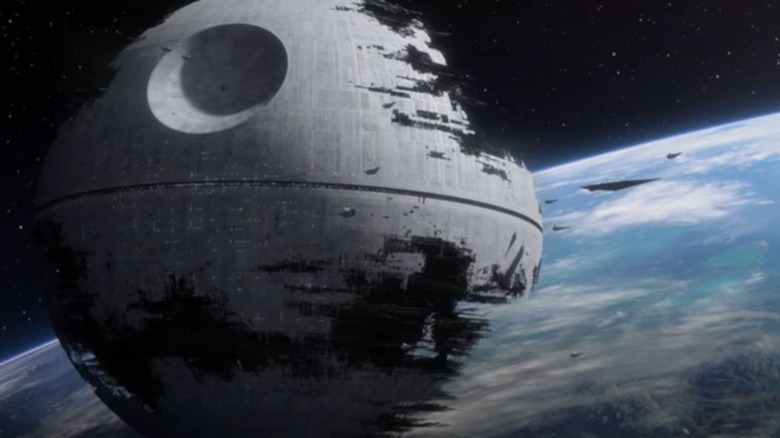
With over four decades of canon material behind it, it's no surprise that the "Star Wars" galaxy is massive. It seems with each passing project that more worlds are added to the map, each with distinct looks, attributes, and inhabitants. Thanks to "Ahsoka," which is emerging as the most important "Star Wars" series, this list of planets has gotten even larger with the introduction of an entirely new galaxy. With all that said, one has to wonder, does the planet Earth exist somewhere in the vastness of the "Star Wars" universe?
Technically speaking, Earth is a locale within the "Star Wars" canon, having been confirmed as such by the most unlikely of sources. This revelation comes from the iconic Disney Parks attraction, Star Tours — a ride where the Star Tours Travel Agency takes passengers across the stars to visit key "Star Wars" locations — on its flight boards. It lists the Earth System as one of its destinations primarily visited on journeys to the Endor system. Seeing as both the ride and the Star Tours Travel Agency are considered canon, the same also applies to Earth.
If one looks at non-canon "Star Wars" materials, even more mentions of Earth can be found.
Earth is more often brought up in non-canon Star Wars media
In "Star Wars" Legends material, Earth is not a major player in the galaxy's many conflicts, but it's at least present. As it turns out, there are "Star Wars" works that aren't even considered canon to the Legends continuity. This is where one is most likely to find mentions of Earth. For instance, it's at the center of a story in the "Galactic Gossip" tabloid from 1993's "Monsters and Aliens from George Lucas," where it's known as Urthha. It details the night a Duros couple was abducted by Urthha humans shortly after their wedding. The "Star Wars"-"Simpsons" crossovers also prominently feature Earth.
Perhaps the most famous overall non-canon Earth-focused "Star Wars" tale is "Into the Great Unknown" by writer W. Haden Blackman and artist Sean Murphy. The 2004 story sees Chewbacca and Han Solo send their ship, the Millennium Falcon, off into hyperspace without a destination. They land on a planet in a heavily wooded area and are attacked by enemies. In the skirmish, Han is killed by arrow-inflicted wounds. It turns out this planet is Earth and the attackers were Native Americans. Over a century later, none other than Indiana Jones and Short Round discover the Falcon while searching for the Sasquatch, aka a surviving Chewie.
At the end of the day, Earth is an incredibly small part of the grand "Star Wars" tapestry, even including non-canon and Legends mentions. At least fans can visit real-life "Star Wars" locations around the Blue Marble and get a sense of what it could be like if it were more closely attached to the galaxy far, far away.
NASA's TESS exoplanet hunter may have spotted its 1st rogue planet
"Definitely a ten out of ten excitement from me. The potential of discovering something like a rogue world drifting in the darkness of interstellar space is just incredible."

NASA's Transiting Exoplanet Survey Satellite (TESS) may have discovered its first free-floating, or "orphaned," planet. That's a planet roaming the cosmos without a star, all alone.
The potential discovery demonstrates that TESS can use a phenomenon first suggested by Albert Einstein over 100 years ago to spot these so-called rogue planets.
Despite the fact that we're most familiar with planets that orbit a parent star (or stars) after discovering over 5,000 exoplanets that exist in such an arrangement, the Milky Way is estimated to be populated with a huge number of free-floating rogue planets , too.
In fact, our galaxy may contain as many as a quadrillion (10 followed by 14 zeroes) rogue planets that have been ejected from their home systems by gravitational interactions with other planets or passing stars . That means these free-floating worlds could vastly outnumber the amount of stars across the Milky Way. Thus, the potential detection of such a cosmic orphan by TESS, which launched in 2018, is a big deal.
Related: The mystery of how strange cosmic objects called 'JuMBOs' went rogue
"We discovered the first signal in TESS data that is consistent with what one would expect from microlensing by a free-floating planet," team co-leader Michelle Kunimoto, a postdoctoral fellow specializing in exoplanet detection at the Massachusetts Institute of Technology (MIT), told Space.com.
"This was only the first sector we searched through of the 75 that TESS has observed, with each sector corresponding to around 27 days of TESS observations," Kunimoto continued. "Finding something so early was surprising — but really exciting."
Get the Space.com Newsletter
Breaking space news, the latest updates on rocket launches, skywatching events and more!
Should this signal actually indicate a rogue exoplanet, the team tells Space.com, it would likely be a planet with a mass a few times that of Earth at a distance of no less than 6,500 light-years away.
A little "rogue hunting" help from Einstein
The majority of exoplanets that have been detected thus far have been hinted at thanks to the effect they have on their parent star. This could be a "wobble" in the star's motion caused by an orbiting planet's minor gravitational tug, or a drop in light that happens as an orbiting planet crosses, or "transits," the face of its star .
Without a parent star, however, neither of these methods apply. That's what makes detecting rogue planets so difficult.
"Rogue planets are dark, as you might expect, and they don't orbit any stars, which means the usual techniques for detecting exoplanets don’t really work," Kunimoto said.
Fortunately, Einstein's 1915 theory of gravity, better known as general relativity , predicts a phenomenon that can be used to spot these free-floating exoplanets.
Einstein suggests that objects with mass curve the very fabric of space and time, or spacetime, with gravity arising from this curvature. When light passes one of those curved spots in spacetime, its path gets bent. That means light from a background source, say a star or a galaxy, can take different paths around the intervening "lensing" object, thus arriving to an observer's vision at different times.
This phenomenon is called " gravitational lensing ," and results in the position of the background source shifting from the perspective of the observer, or appearing in multiple places in the same image.
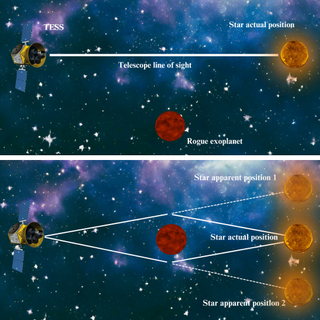
Rogue planets have very little mass, so the lensing effect is weak and thus called " microlensing. " Yet, it can cause a brightening of a background source that is visible to astronomers, indicating the presence of a rogue planet.
"Microlensing is the best — and typically only — option for finding these dark, isolated objects since it only relies on the mass of a planet through its gravitational field," Kunimoto said.
Forget the "T" in TESS
As the "T" for transit in TESS suggests, this space telescope may not immediately seem like the right instrument to hunt for rogue planets.
"TESS is designed to look for planets closely bound to their host stars by searching for transits," Kunimoto explained. " Transits are the 'dimmings' of the star caused by a planet passing in front of it, like what you might have seen in the recent eclipse." However, as mentioned above, gravitational lensing can also cause a background star to brighten as a lensing object passes between that star and Earth. Kunimoto explained that, because TESS is sensitive to tiny changes in a star's light, it can also detect these brightening episodes, a hallmark feature of microlensing caused by free-floating planetary rogues.
But, given this, you might wonder: Why is this the first potential rogue exoplanet among the other 6,000 or so exoplanet candidates (400 or so of which have been confirmed) TESS has spotted since 2018?
Well, it turns out no one was really looking until now. "TESS is surprisingly well-suited to finding rogue planets through microlensing, but it turns out that these kinds of signals hadn’t really been explored previously in TESS data," Kunimoto pointed out. "Our approach of looking for unbound planets with microlensing and the resulting TESS planetary microlensing candidate were both firsts for TESS.
"Since TESS data hadn't been used to look for short-duration microlensing events before, past exoplanet searches weren't going to be sensitive to seeing these signals."
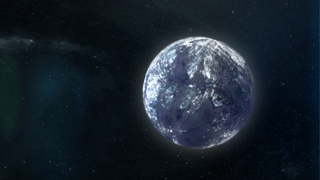
Unfortunately, however, like with many other detected exoplanet candidates , this discovery still needs to be confirmed.
"It's important to say that we can't at present confirm this is a planet," Kunimoto said. "The fact that microlensing events do not repeat means it's difficult to discern the nature of any particular signal. So, we're cautious about the origin of this event, naming it a rogue planet 'candidate' because it’s consistent with the signal you'd expect from such a world."
She added that, as the team explores more TESS data and performs follow-up observations, the truth about the signal will slowly become clearer.
Still, the provisional nature of these findings certainly hasn't dimmed the enthusiasm of the team or their excitement.
"Definitely a ten out of ten excitement from me," William DeRocco, team co-leader and a researcher at the University of California Santa Cruz, told Space.com. "I'm used to looking for dark matter, where the odds of actually seeing anything are wildly low, so the potential of discovering something like a rogue world drifting in the darkness of interstellar space is just incredible."
— A 'captured' alien planet may be hiding at the edge of our solar system — and it's not 'Planet X'
— 400 Earth-size rogue planets could be wandering the Milky Way
— A cosmic 'fossil record' could be hidden among orphaned stars
The authors of this research believe that the future is bright when it comes to the prospect of TESS discovering more rogue planets.
"This is proof of principle that TESS can find these kinds of signals, and now it’s up to us to start diving deep into finding more and understanding what they might mean," Kunimoto concluded."We’ve searched through less than 1% of TESS data; with 99% to go, we have a wealth of new opportunities for exciting discoveries along the way!
The team's research has been submitted for publication in the journal Monthly Notices of the Royal Astronomical Society. It is currently featured as a pre-peer review paper on the repository site arXiv.
Join our Space Forums to keep talking space on the latest missions, night sky and more! And if you have a news tip, correction or comment, let us know at: [email protected].

Robert Lea is a science journalist in the U.K. whose articles have been published in Physics World, New Scientist, Astronomy Magazine, All About Space, Newsweek and ZME Science. He also writes about science communication for Elsevier and the European Journal of Physics. Rob holds a bachelor of science degree in physics and astronomy from the U.K.’s Open University. Follow him on Twitter @sciencef1rst.
Citizen scientists find remarkable exoplanet, name it after Harry Potter character
Some planets 'death spiral' into their stars and scientists may now know why
Boeing Starliner 1st astronaut flight: Live updates
Most Popular
- 2 Boeing Starliner team delays 1st historic astronaut launch due to rocket issue
- 3 'Sparkly' narwhal toy trades sea for space as Boeing Starliner zero-g indicator
- 4 Watch 2 bus-size asteroids make close flybys of Earth this week (video)
- 5 Spacecraft captures absolutely incredible video of plasma swirling on the sun

Sign in to add this item to your wishlist, follow it, or mark it as ignored
Sign in to see reasons why you may or may not like this based on your games, friends, and curators you follow.

INTRODUCTORY OFFER! Offer ends 9 May
About This Game
System requirements.
- Requires a 64-bit processor and operating system
- OS *: windows7/8/10
- Processor: Dual Core 2 GHz
- Memory: 4 GB RAM
- Graphics: Intel HD 4600 (AMD or NVIDIA equivalent)
- Storage: 1 GB available space
It is forbidden to unpack or any infringement.
More like this
You can write your own review for this product to share your experience with the community. Use the area above the purchase buttons on this page to write your review.

You can use this widget-maker to generate a bit of HTML that can be embedded in your website to easily allow customers to purchase this game on Steam.
Enter up to 375 characters to add a description to your widget:
Copy and paste the HTML below into your website to make the above widget appear

Popular user-defined tags for this product: (?)
Sign in to add your own tags to this product.


- View history
Planets are celestial bodies orbiting a star or stars. Most intelligent species evolved and still live on planets, including their respective homeworlds and colonies . For more information, please see the main article about planets .
The following is a list of all planets – more specific lists are linked to from the main article.
External links [ ]
- Planets at Memory Beta , the wiki for licensed Star Trek works
- Star Trek Locations: Planets and Moons at The STArchive
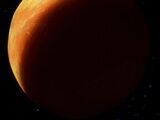
All items (1111)
- Category:Planets (retconned)
- Category:Unnamed planets

- 40 Eridani A I

- Achrady VII

- Adelphous IV
- Adigeon Prime

- Aldebaran III

- Alpha Braga IV
- Alpha Braga VII

- Alpha Carinae V
- Alpha Centauri (planet)
- Alpha Cygnus IX

- Alpha Eridani II

- Alpha Majoris I

- Amleth Prime
- Andevian II
- Andoria Prime

- Antide Prime

- Arakis Prime
- Archanis IV

- Argelius IV

- Axanar (planet)

- B'Saari II

- Category:Bajor

- Balosnee VI

- Barisa Prime

- Berengaria VII

- Beta Antares IV

- Beta Berman I
- Beta Canopus
- Beta Eminiar VII

- Beta Tottoro IV

- Beth Delta I

- Blue Horizon

- Boradis III
- Boranis III

- Bozel Prime

- Braslota II
- Brax (planet)

- Breen (planet)

- Burala Prime

- Caldik Prime

Astronomers make rare discovery of star eating up planet
A similar event is predicted for Earth 5 billion years from now.
A Jupiter-sized planet was the main course for a dying star's meal, according to scientists who witnessed this rare interstellar course.
A study published Wednesday in "Nature," detailed the observations and analysis of the event that took place on May 20, 2020. Kishalay De, a postdoc at MIT's Kavli Institute for Astrophysics and Space Research, and the lead author of the study, said the gaseous planet spiraled close into the star's orbit until it was engulfed into its core.
De said the event created an outburst that made the star 100 times brighter over just 10 days, before quickly fading away.

"We were seeing the end-stage of the swallowing," he said in a statement.
MORE: Large asteroid to safely pass by Earth in once-per-decade moment
De and his team discovered the event through Zwicky Transient Facility (ZTF) at Caltech's Palomar Observatory in California, which scans the sky for stars that rapidly change in brightness.
It took another year for De and his team to determine what caused the change in brightness that was observed. He analyzed data from the Keck Observatory in Hawaii, which also observed the event.
De said that the data from Keck puzzled him, as it showed that the two objects didn't give off hydrogen and helium, which is what typically happens when a dying star erodes another.
MORE: Rare, green comet to pass by Earth Wednesday
The team got more data from the Palomar Observatory which used an infrared camera to observe the event and it showed "signals of colder material, in contrast to the white-hot, optical emissions that arise from binaries and other extreme stellar events."
"That infrared data made me fall off my chair," De said. "The source was insanely bright in the near-infrared."

More data found that the dying star threw out colder energy for over a year. De said the data showed that the energy was about 1000 times smaller than the star, which was a key breakthrough.
"And it's a happy coincidence that the mass of Jupiter is about 1/1,000 the mass of the sun. That's when we realized: This was a planet, crashing into its star," he said.
MORE: From stunning images from James Webb Telescope to 1st Mexican woman in space, here are the top space stories of 2022
De said the observation is very significant because such an event has never been seen in real-time.

He also said that a similar event is predicted to happen to Earth, but not for another 5 billion years, after the sun burns out.
"If some other civilization was observing us from 10,000 light-years away while the sun was engulfing the Earth, they would see the sun suddenly brighten as it ejects some material, then form dust around it, before settling back to what it was," De said.
Related Topics
Top stories.

'Miracle': Pastor credits divine intervention after man pulls gun on him in church
- May 6, 11:02 AM

Trump trial: Witness says Cohen's checks were sent to White House to be signed
- May 6, 4:53 PM

Starbucks is struggling. Here's why that matters?
- 3 hours ago

Ex-Fulton County prosecutor Nathan Wade says 'day of reckoning' coming in Trump case
- May 6, 5:00 AM

4 big takeaways from Day 12 of Trump's hush money trial
- May 6, 5:22 PM
ABC News Live
24/7 coverage of breaking news and live events

IMAGES
VIDEO
COMMENTS
Earth as seen from Luna. Earth's orbit around its sun, Sol, measured more than two hundred million kilometers in diameter.(TNG: "Relics") Earth was located in the Alpha Quadrant, less than ninety light years from the boundary to the Beta Quadrant.(ENT: "Broken Bow", "Two Days and Two Nights"; Star Trek Into Darkness production art) It was a little over sixteen light years away from the planet ...
Miri: Directed by Vincent McEveety. With William Shatner, Leonard Nimoy, Kim Darby, Michael J. Pollard. The Enterprise discovers a planet exactly like Earth, but the only inhabitants are children who contract a fatal disease upon entering puberty.
A strange group of children are discovered on an Earth-like planet. Responding to a Earth-like recording over a hundred light years from Earth, the USS Enterprise discovers a planet that is an exact copy of Earth. It has the same mass, circumference, density, and atmosphere. Even the topography is identical. Beaming down, the landing party of Captain Kirk, Spock, Dr. McCoy, and Janice Rand ...
Another Star Trek reference book, Star Trek: Star Charts, indicates rather that the planet was a terraformed recreation produced by the Preservers and populated by other groups of people taken from Earth in the past as they did with the Native Americans in another episode of TOS.
Planetary Classification of the United Federation of Planets in the Star Trek Universe ... but it is not a majority feature. An example of a class O planet is Argo, the planet Earth is very close to Class O. Class P Glaciated : Classification: Glaciated: Age: 3-10 billion years: Diameter: 10,000 - 15,000 km: Location:
Assignment: Earth: Directed by Marc Daniels. With William Shatner, Leonard Nimoy, DeForest Kelley, Robert Lansing. While back in time observing Earth in 1968, the Enterprise crew encounters the mysterious Gary Seven who has his own agenda on the planet.
Published Aug 21, 2021. Star Trek's characters use a very specific system to classify the planets they encounter. Each letter and category has its own specific meaning. The bright, optimistic future of Star Trek entailed regular scientific exploration, which was part of Starfleet's mantra. That included an entire lexicon of terms, to better ...
Class M planet. In the Star Trek universe, a Class M planet is one habitable by humans and similar life forms. Earth, Vulcan, Romulus, and Qo'noS are examples of Class M planets. [1] The planet needs an atmosphere of oxygen and nitrogen, should be close to a stable star, have fertile soil, a tolerable gravity, a climate that is generally ...
"Assignment: Earth" is the twenty-sixth and final episode of the second season of the American science fiction television series Star Trek. Written by Art Wallace (based on a story by Wallace and Gene Roddenberry) and directed by Marc Daniels, it was first broadcast on 29 March 1968.. In the episode, engaged in "historical research", the USS Enterprise travels back through time to 1968 Earth ...
Directed by Star Trek veteran Marc Daniels, Planet Earth has the flat lighting and wide, lifeless angles of your average 1960's second-rate drama. Gone is much of the dark, cinematic flair of ...
Planet Earth is a 1974 American made-for-television science fiction film that was created by Gene Roddenberry, ... Planet Earth and Star Trek, Saxon's character was considered closer to Star Trek's Captain Kirk in that he shared the same "physical beauty" and "charming arrogance" as Kirk, compared to the dark, brooding star of Genesis II, ...
For the mirror universe counterpart, see Earth (mirror). Earth (also known as Tellus, Terra or Sol III) is a class M planet, the third planet in the Sol star system in the space of the galaxy's Alpha Quadrant, at coordinates 1.23N 2.79W. It is the Federation capital, and the primary political subdivision of United Earth, one of five founding members of the Federation. Its sentient species ...
In the meantime, Earth-bound stargazers can peer into the night sky and find these real-life counterparts to Star Trek's fictional M-class worlds.. Kepler 452b. Since its launch in 2009, NASA ...
StarTrek.com. The parallels between SNW and The Day the Earth Stood Still begin to emerge in the first episode's opening scenes, as the people of Kiley 279 report the appearance of an UFO above their planet. While the U.S.S. Archer may have a nacelle attached to its saucer, the sequence nevertheless heavily evokes the opening of the classic ...
The Planet Classification System was developed by the Federation as a means of conveniently categorizing planets using a uniform criteria consisting of a number of elements including, but not limited to: atmospheric composition, age, surface temperature, size, and the presence of life. The system uses the Terran alphabet, more specifically the Latin alphabet to designate the different ...
Jeff Greenwald's 'Star Trek' was a place "where humanity's highest calling was exploration" (like America's real space program) and its values were freedom and compassion. In America, we have a semblance of freedom but compassion is sorely lacking. Only a made-up comic book world can have both simultaneously.
So the star Omicron 2 Eridani is also known as 40 Eridani (and is probably the star that the planet Vulcan in Star Trek orbits). There have been tens, and hundreds, and thousands, of other star catalogs created since then, listing tens of thousands, hundreds of thousands, and millions, of other stars, most of which can be seen from Earth only ...
1. Vulcan. What is perhaps the most famous Star Trek planet was placed by creator Gene Roddenberry in a real star system: 40 Eridani. This trinary system of three dwarf stars, about 16 light-years from Earth, could play host to exoplanets; none have been detected there so far. The most massive is 40 Eridani A, chosen as Vulcan's home world.
Star Trek. , Gene Roddenberry Battled Second-Wave Feminism on. Planet Earth. From 1969 to 1975, ABC put out weekly films. They functioned as TV pilots, testing grounds for up-and-coming filmmakers ...
In the Star Trek: The Original Series episode, "The Return of the Archons," Captain Kirk and his crew visit a planet ruled by a dictator named Landru (Charles Macauley). Landru and his Lawgivers control the society, which resembles 19th century Earth, allowing the inhabitants annual "Festivals" during which all crime is allowed. As Kirk and Spock (Leonard Nimoy) investigate, they discover that ...
The heroes of Star Trek: The Original Series visit countless planets throughout their ventures. These ones, however, can easily be compared to Earth. This was the first time that these weapons ...
Given how the "Star Wars" movies and TV shows take place in a galaxy far, far away, one has to wonder whether Earth exists in the franchise's canon.
Most extrasolar planets in fiction are similar to Earth—referred to in the Star Trek franchise as Class M planets—and serve only as settings for the narrative. One reason for this, writes Stephen L. Gillett [Wikidata] in The Greenwood Encyclopedia of Science Fiction and Fantasy, is to enable satire. Nevertheless, there are also many fictional planets that differ significantly from Earth.
The gravity of a free-floating "rogue" planet may deflect and focus light from a distant star when passing closely in front of it. Owing to the distorted image, the star temporarily seems much ...
About This Game Wandering Planet: Prelude is a space-based game that builds defense towers on earth to defend against alien invaders called Black Ember. We need to rationalize the placement of defense towers and production buildings to prevent aliens from destroying the headquarters built by humans to guard the flame of civilization on Earth.
Planets are celestial bodies orbiting a star or stars. Most intelligent species evolved and still live on planets, including their respective homeworlds and colonies.For more information, please see the main article about planets.. The following is a list of all planets - more specific lists are linked to from the main article.
Astronomers make rare discovery of star eating up planet. A similar event is predicted for Earth 5 billion years from now. A Jupiter-sized planet was the main course for a dying star's meal ...